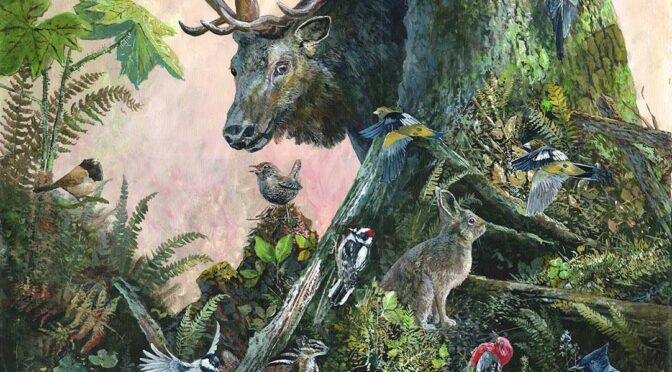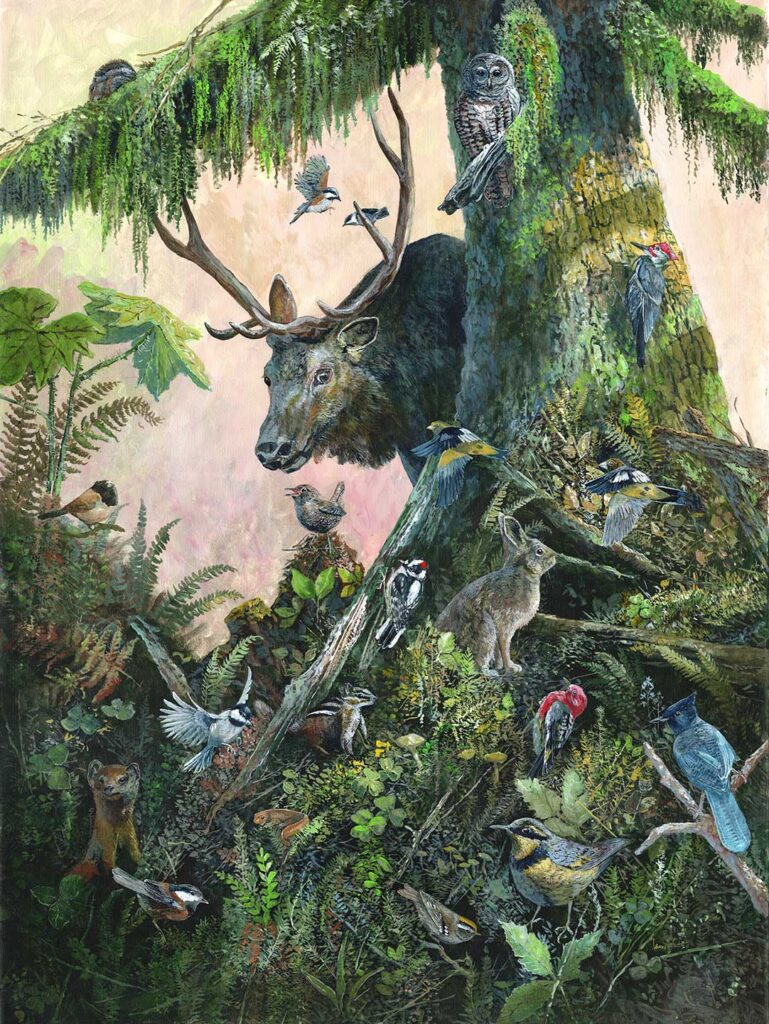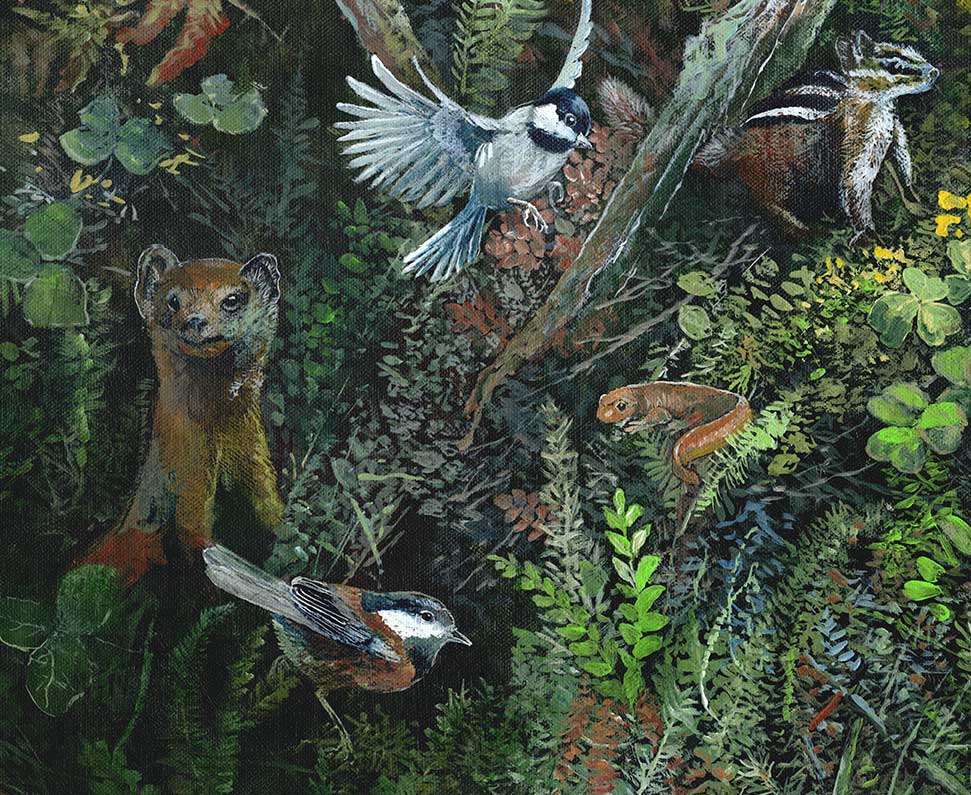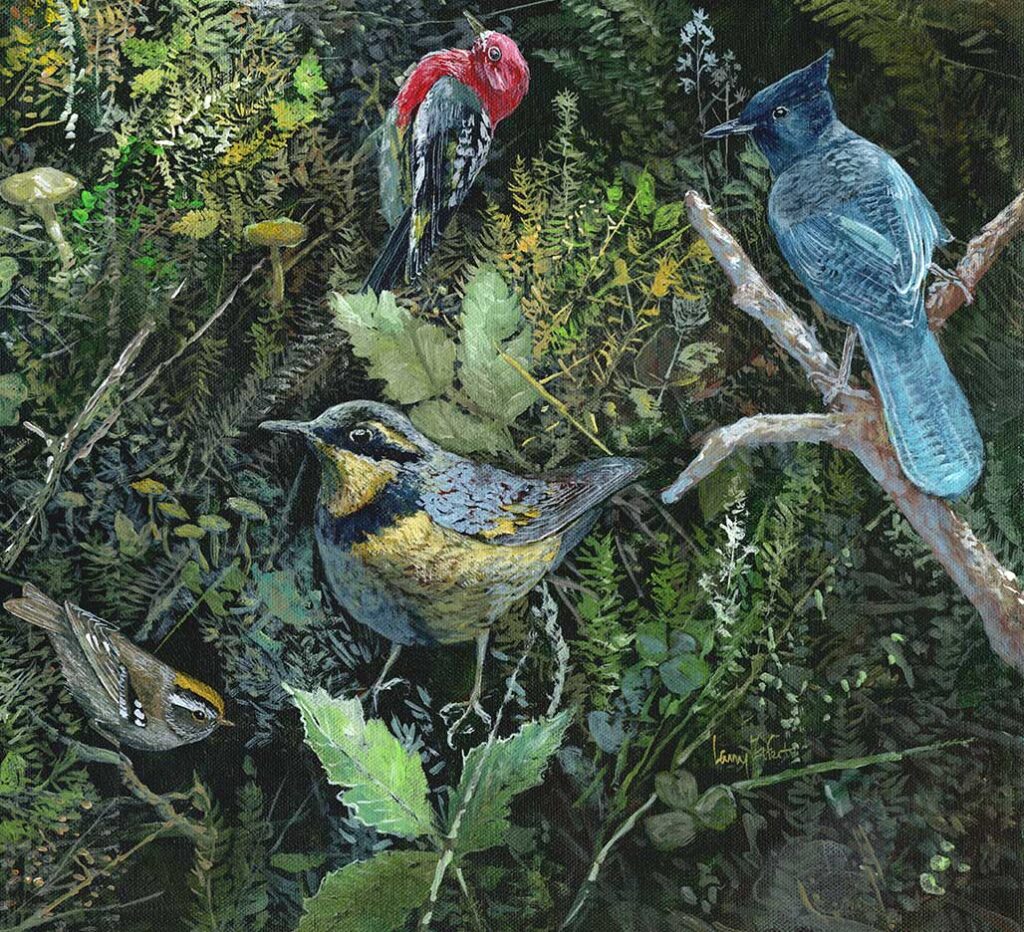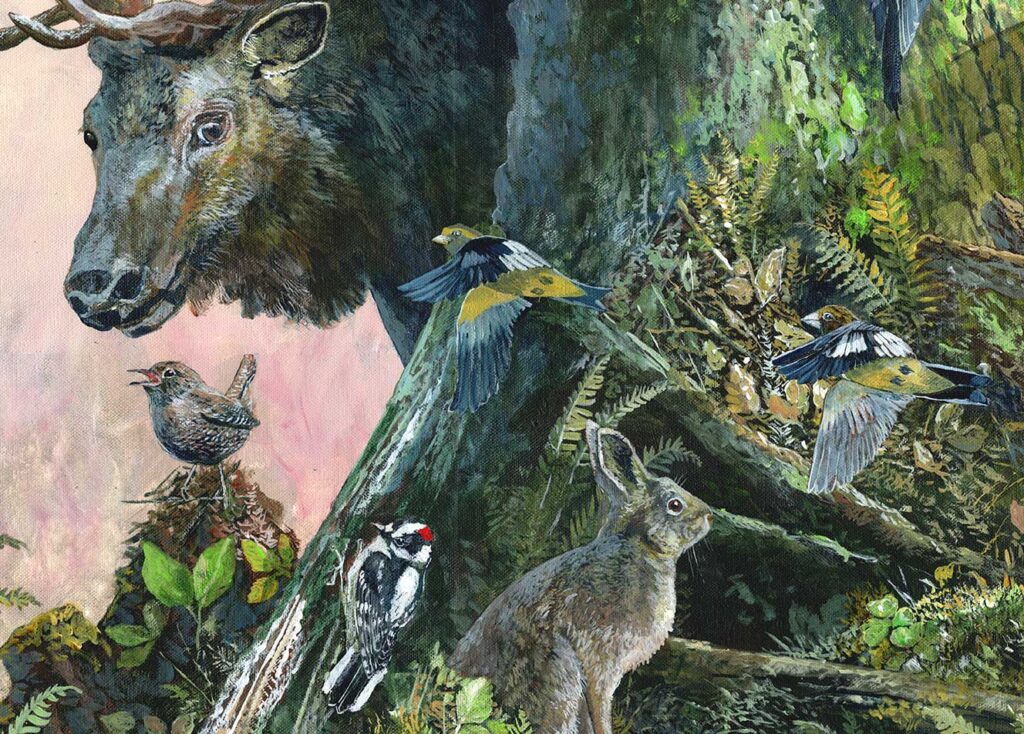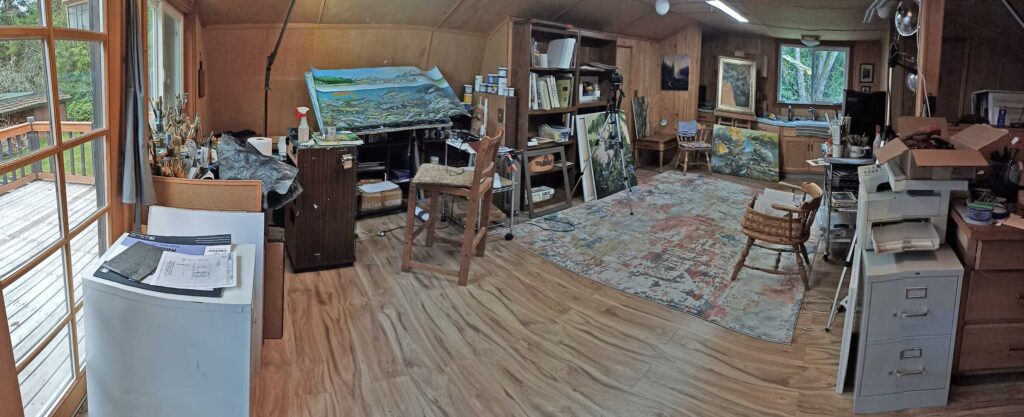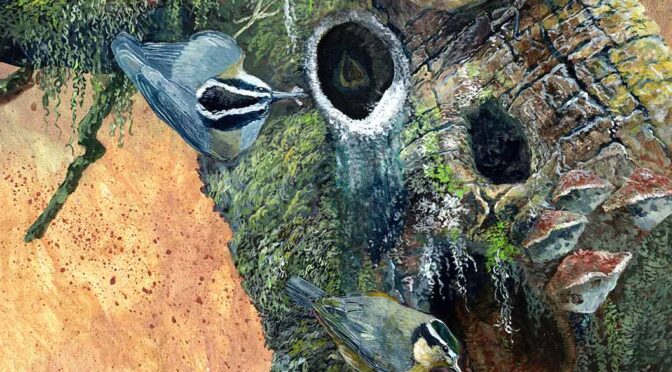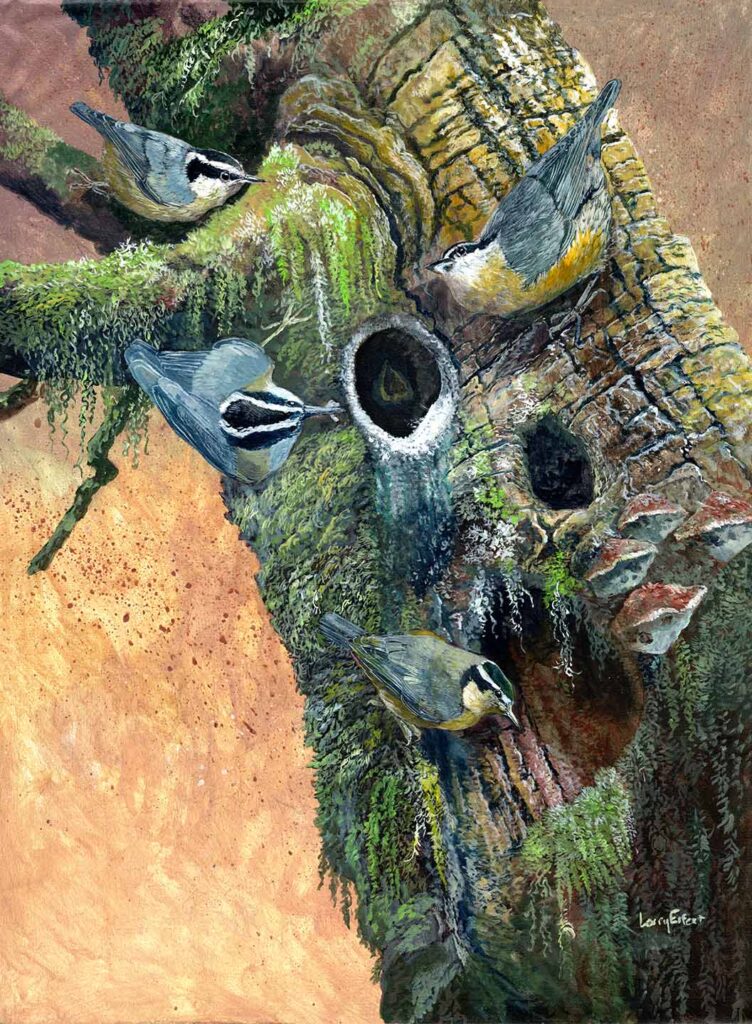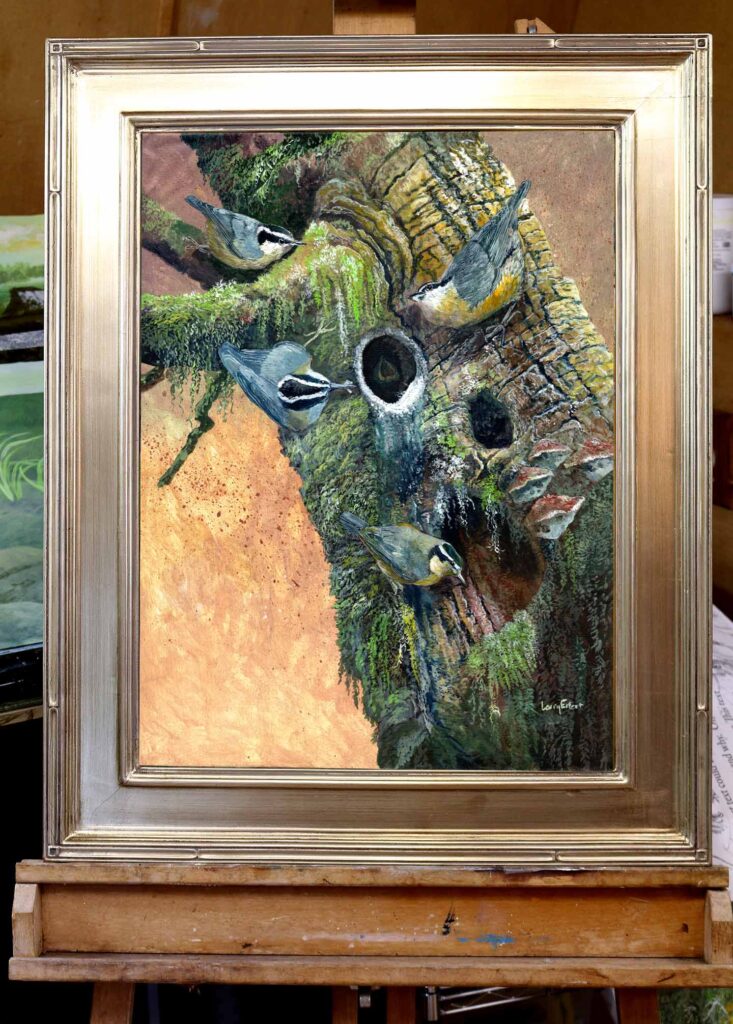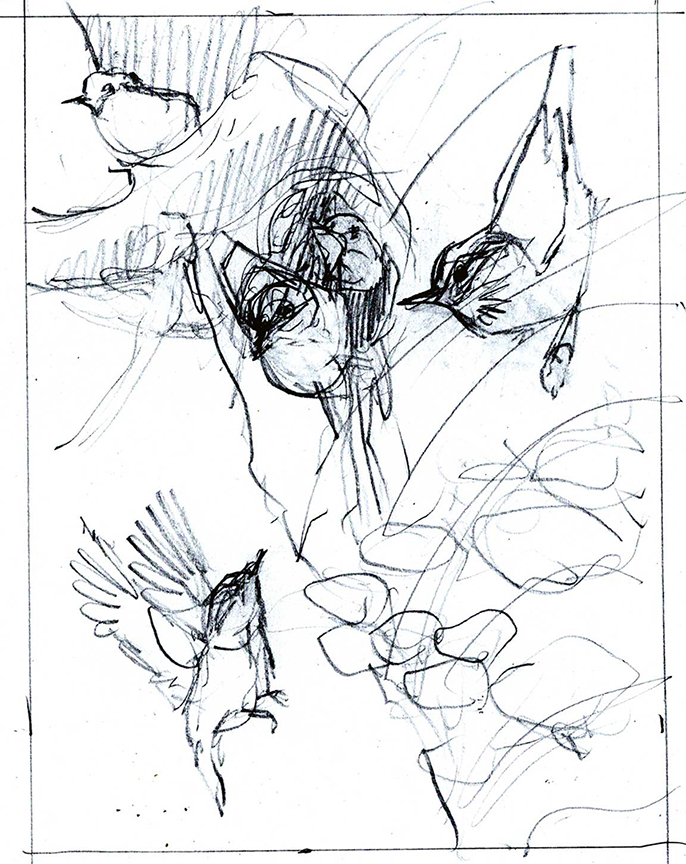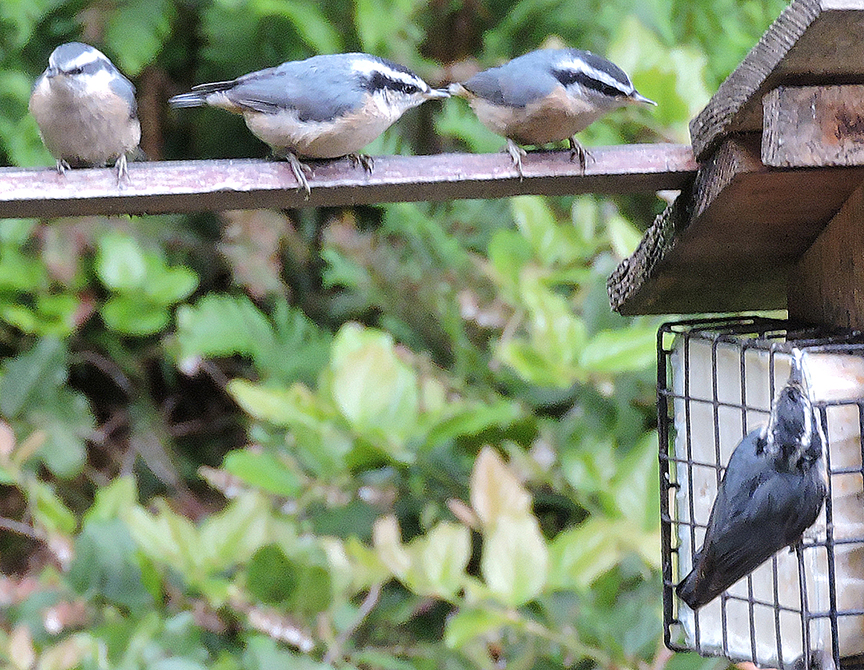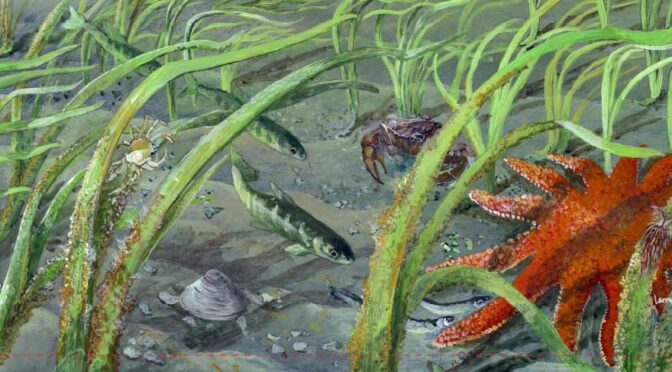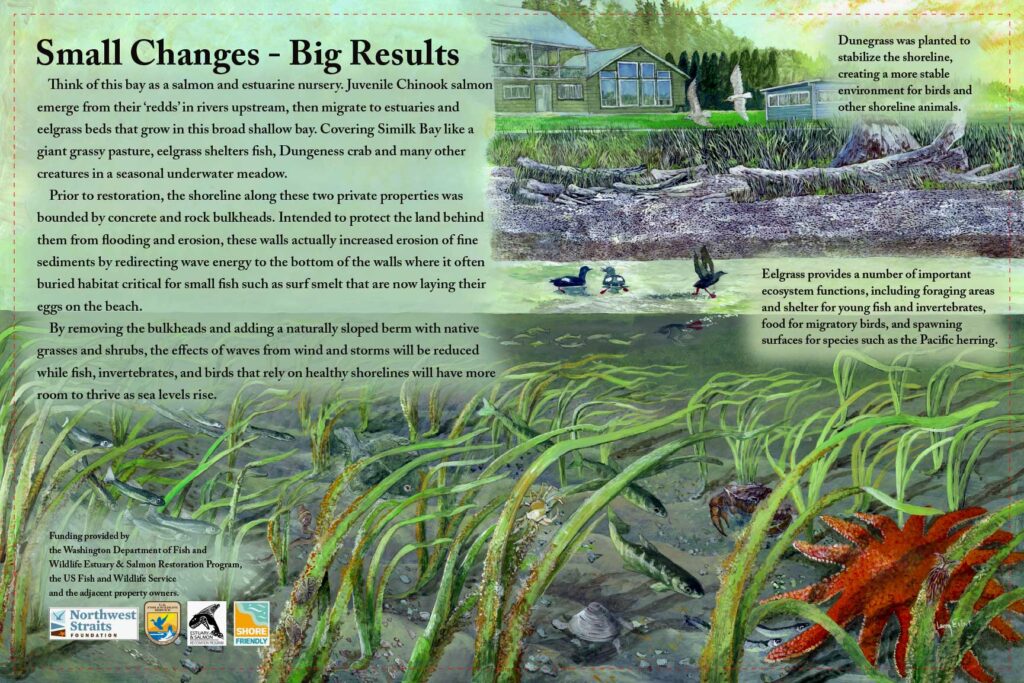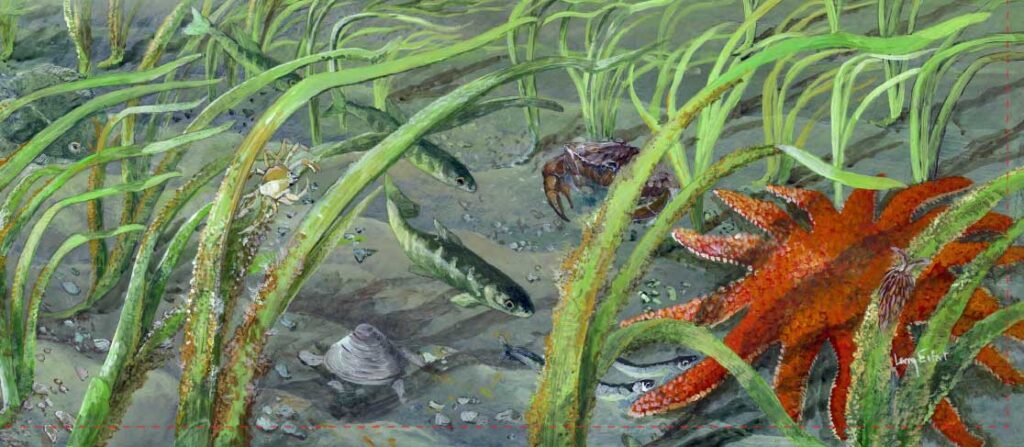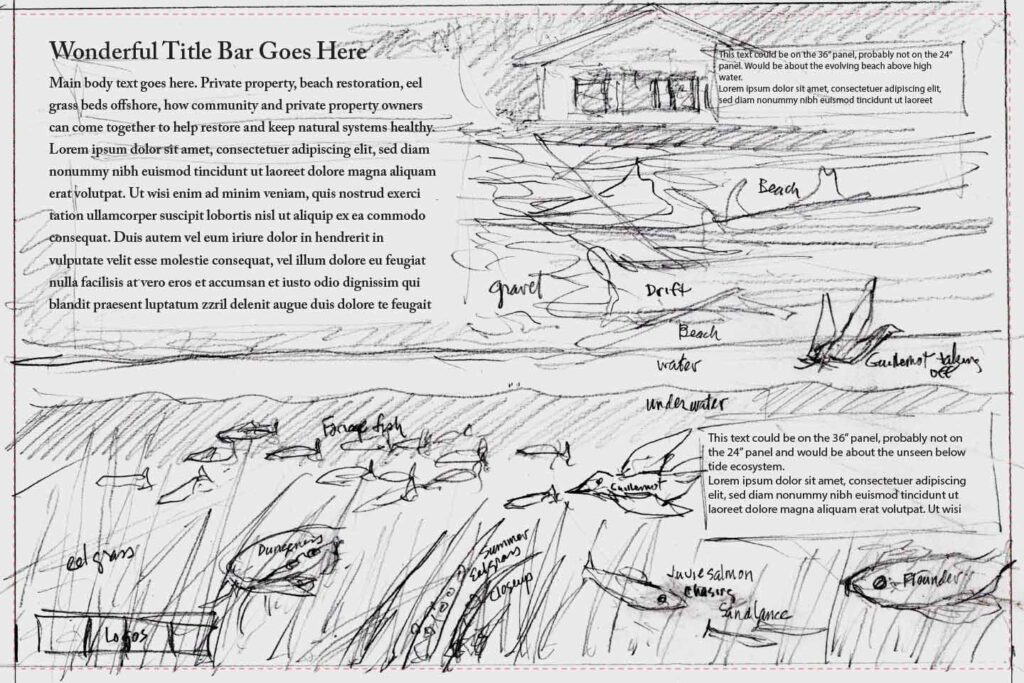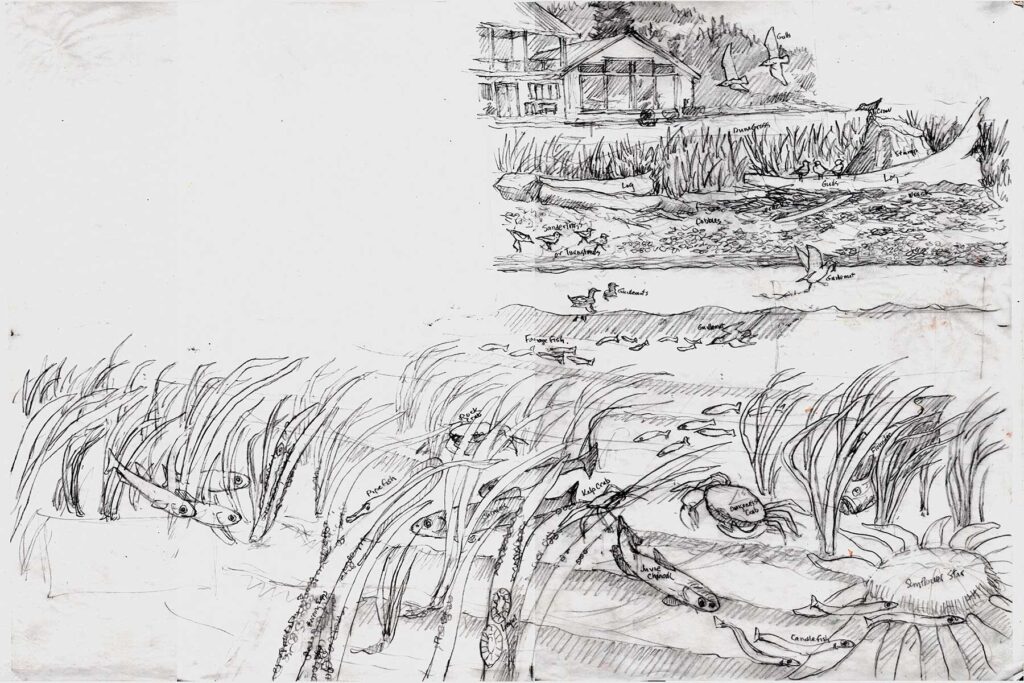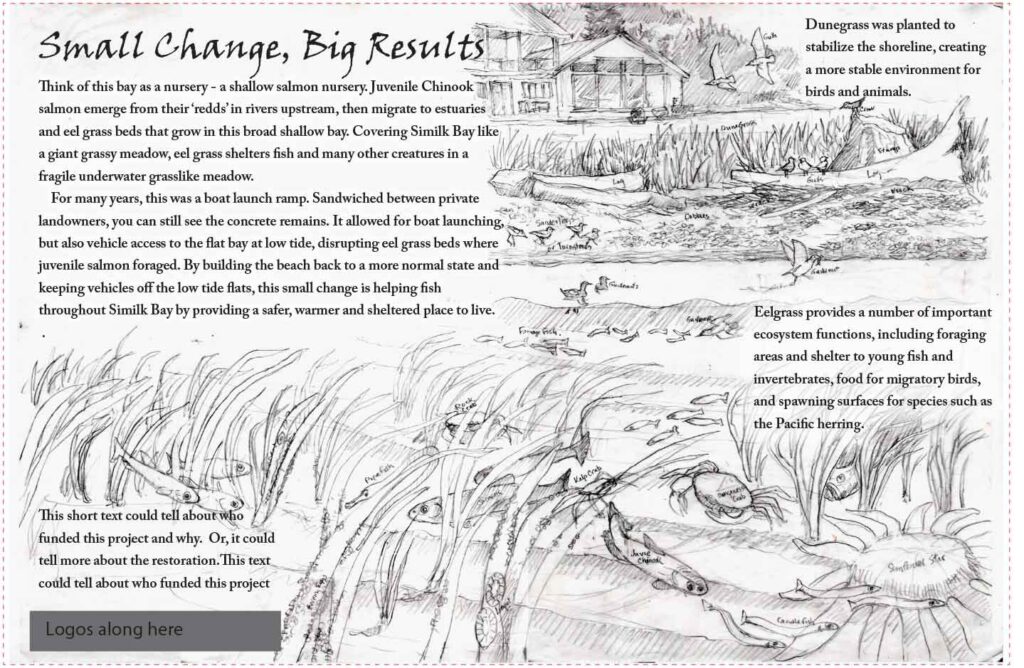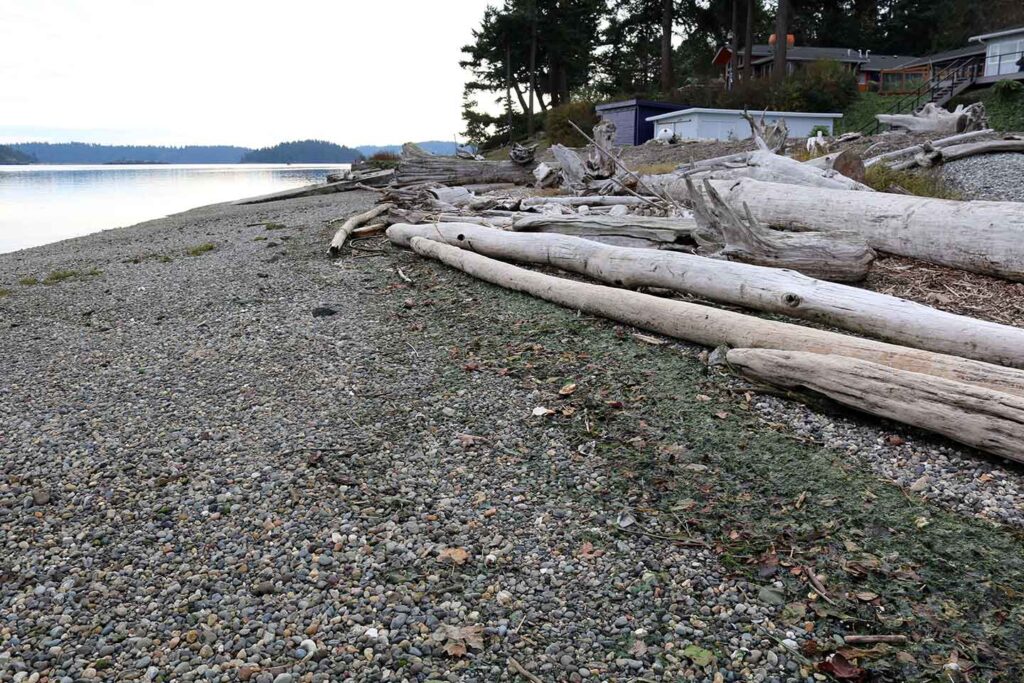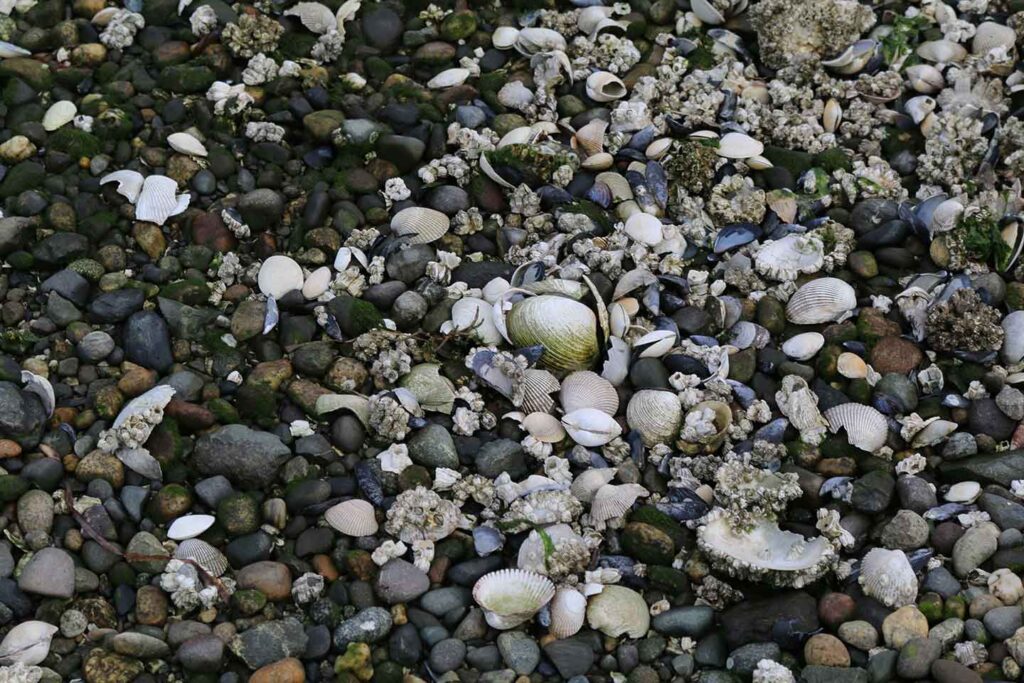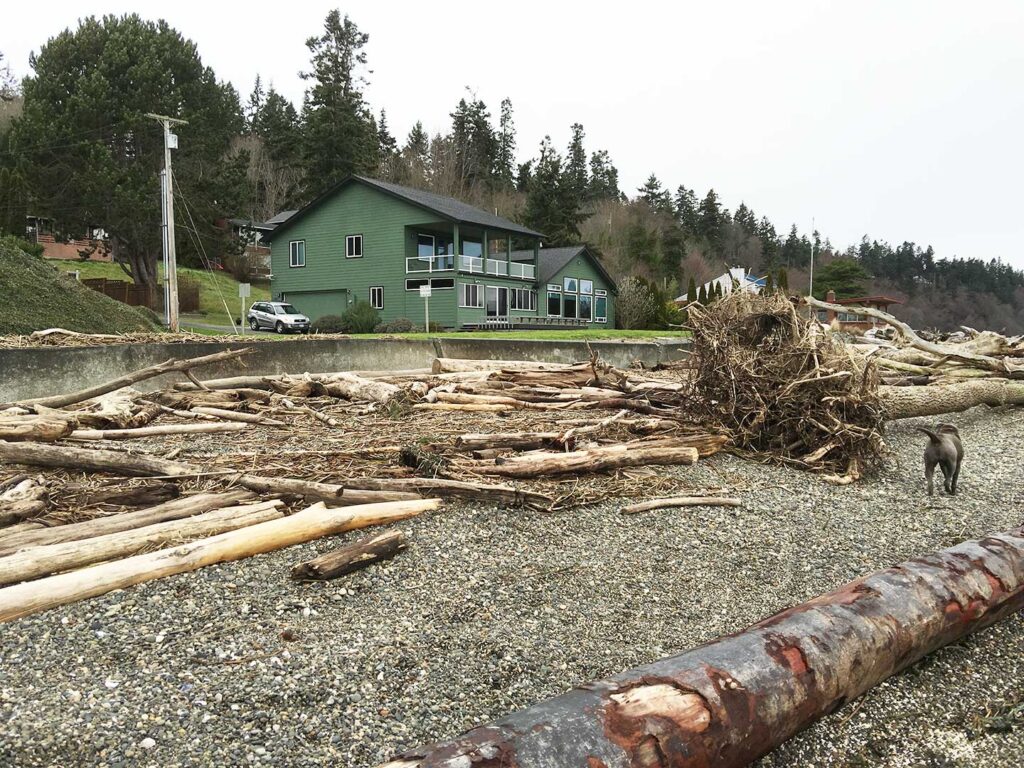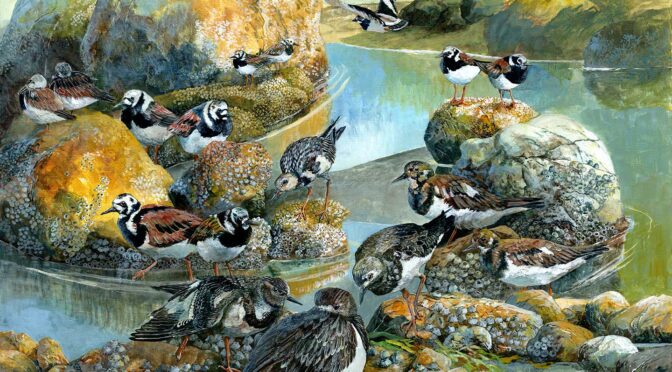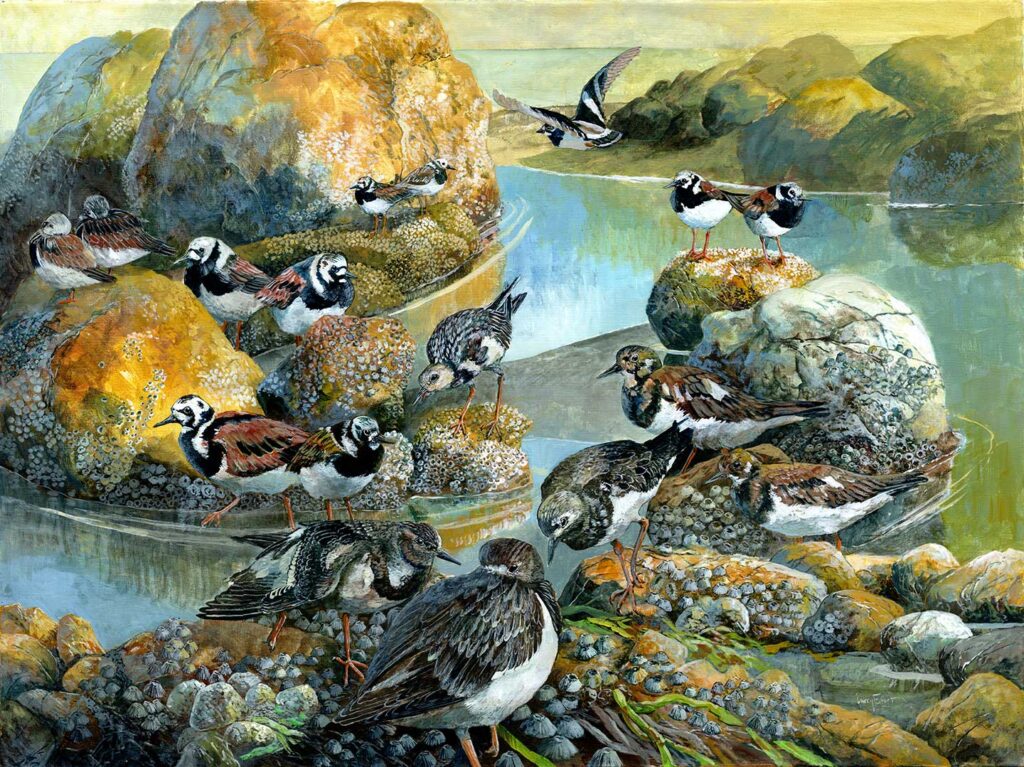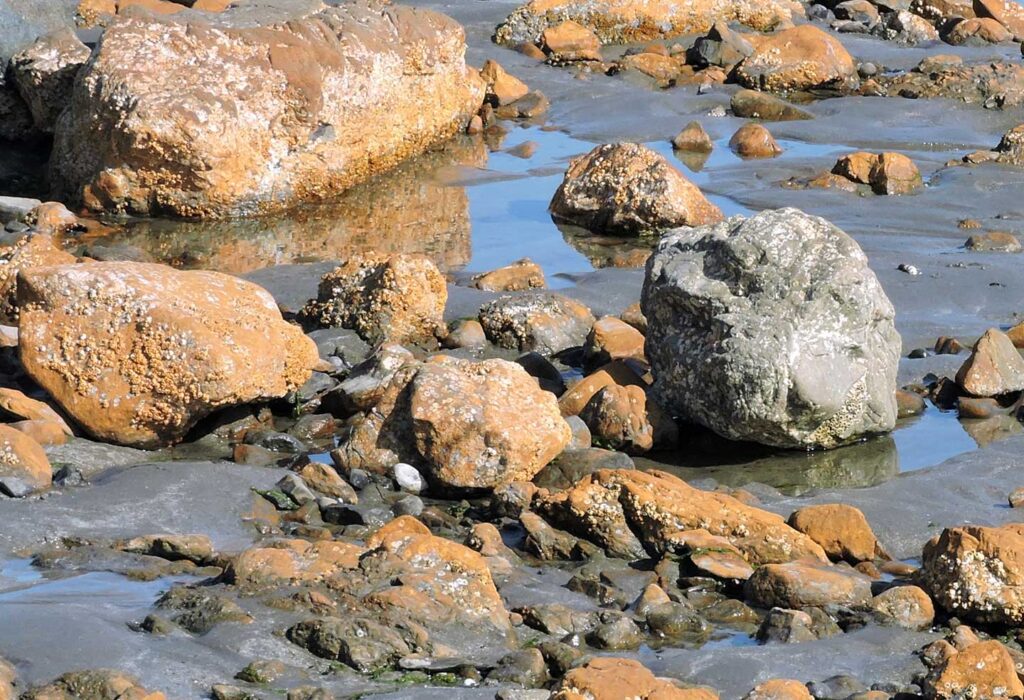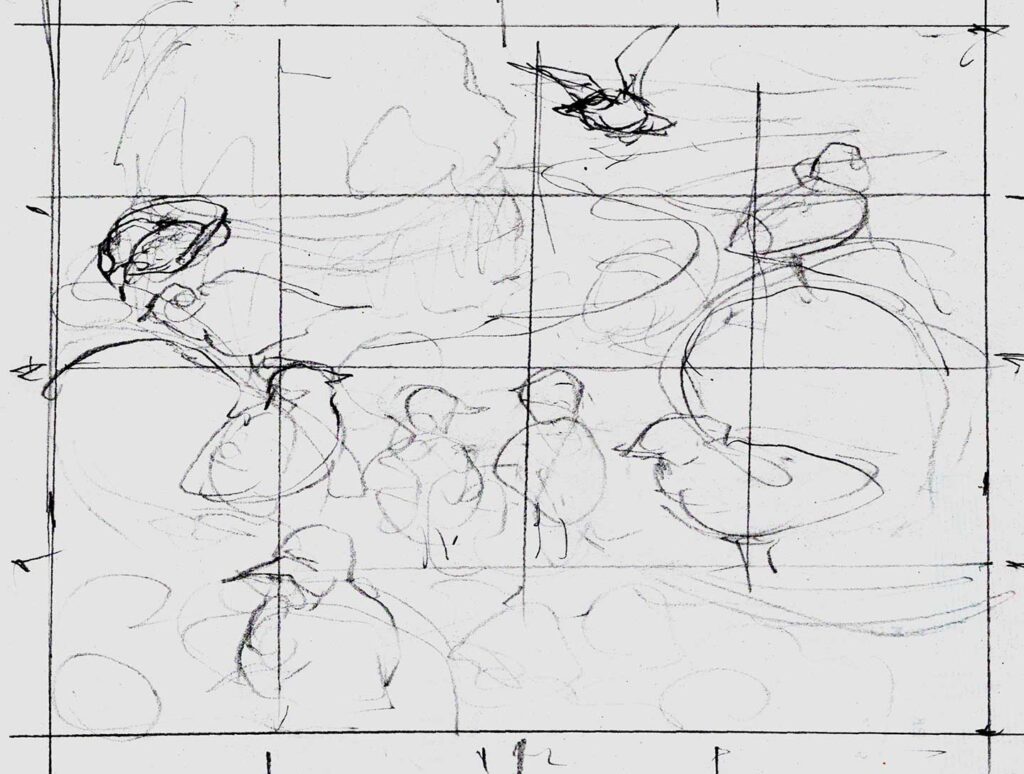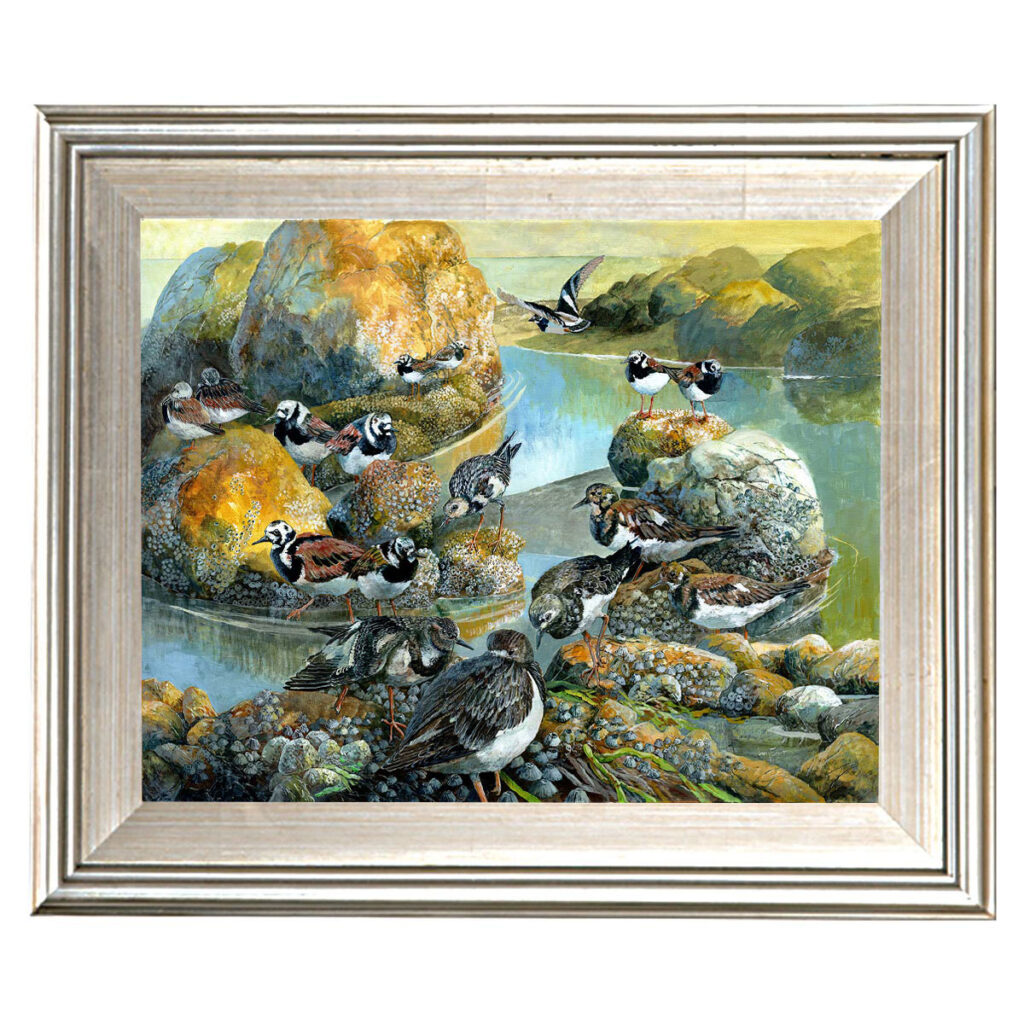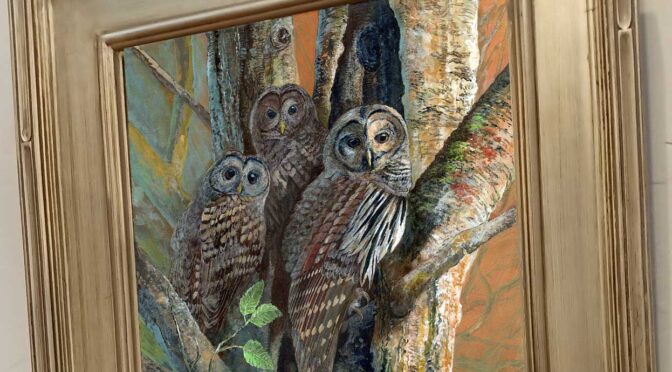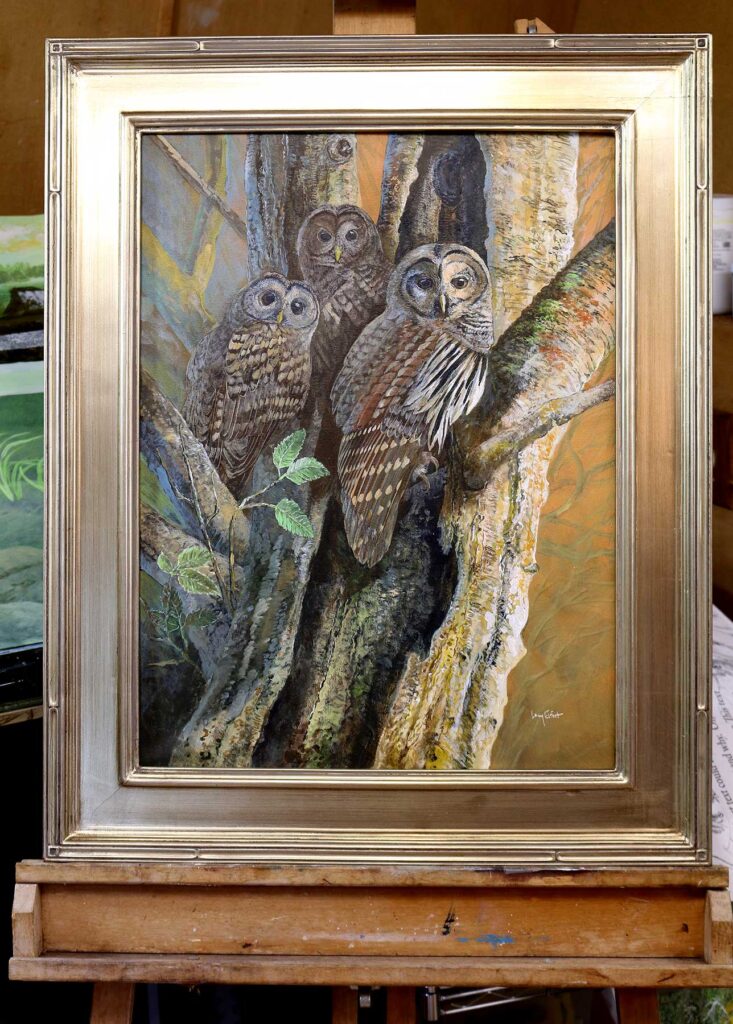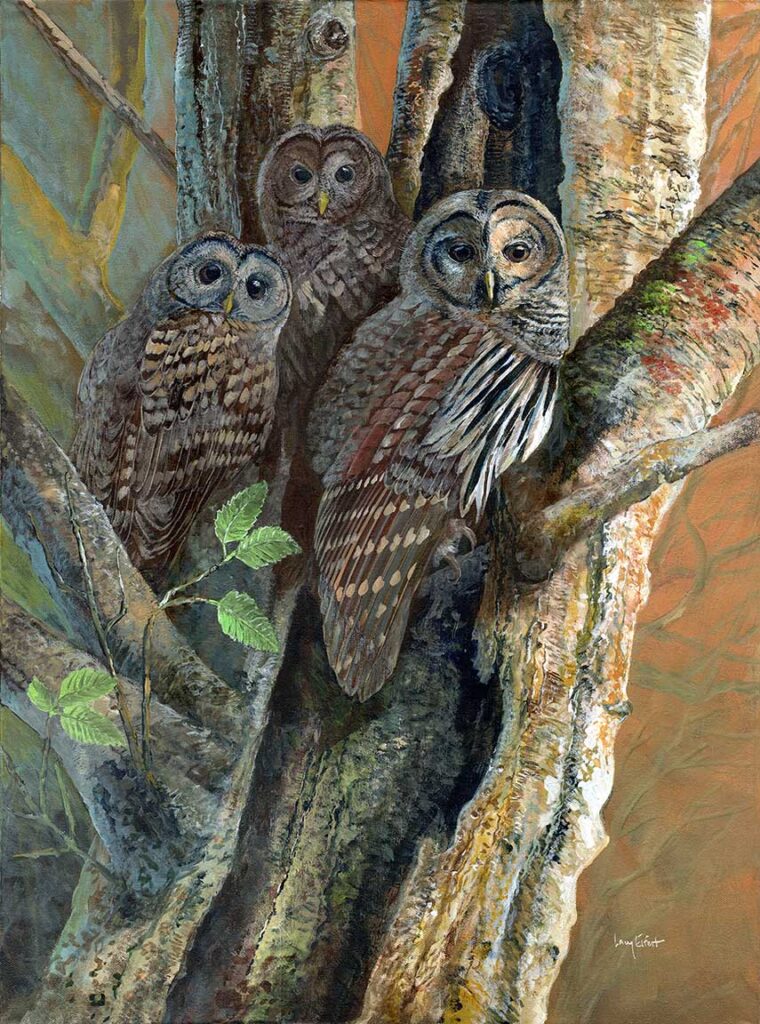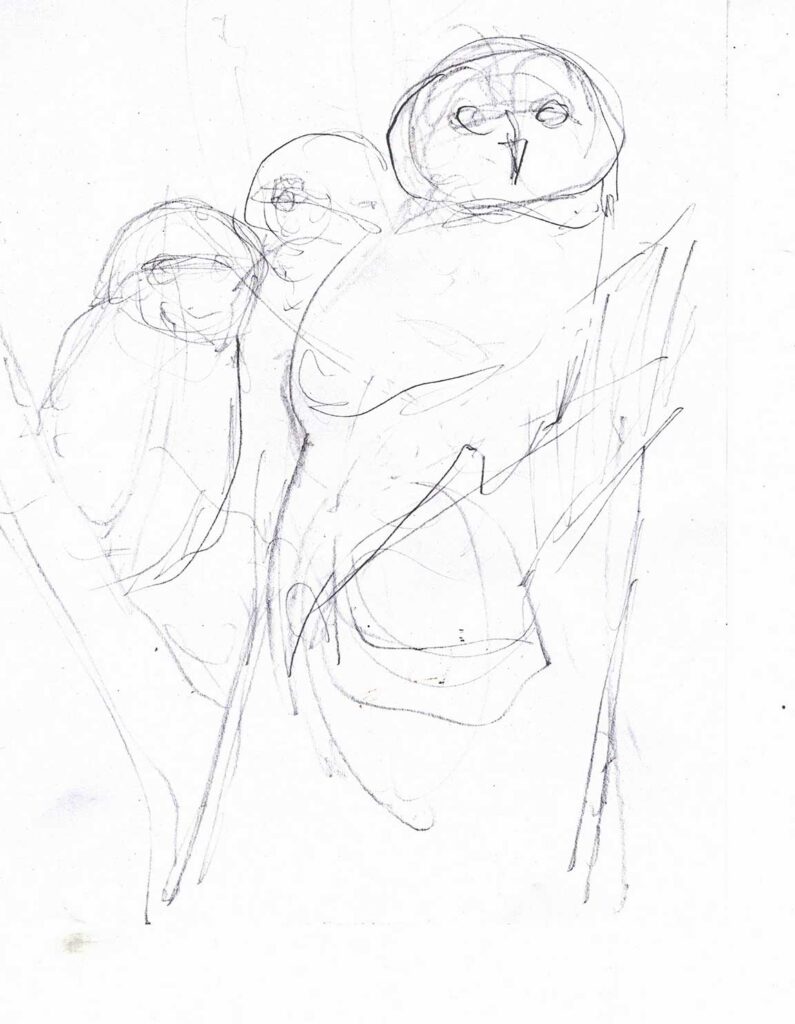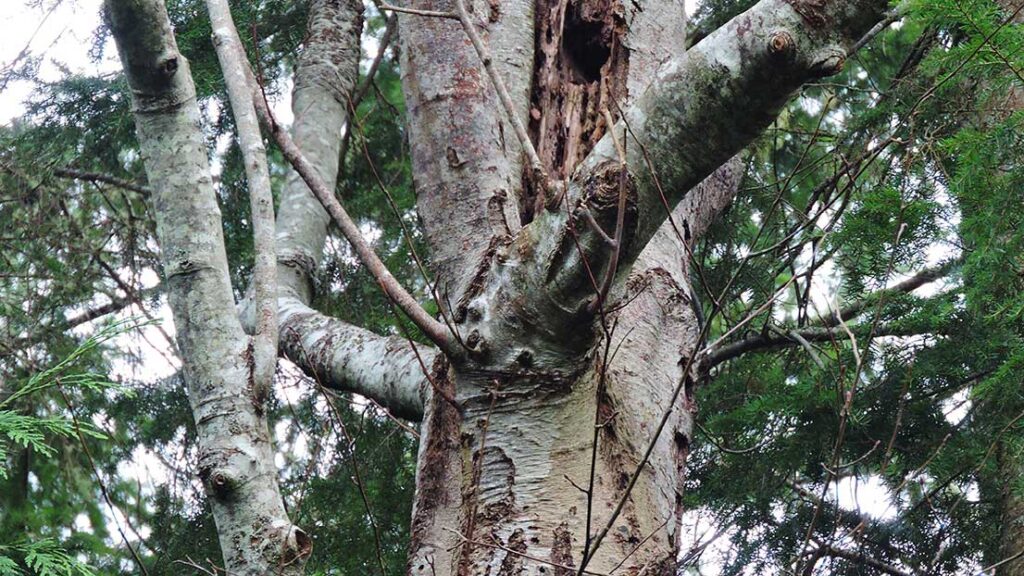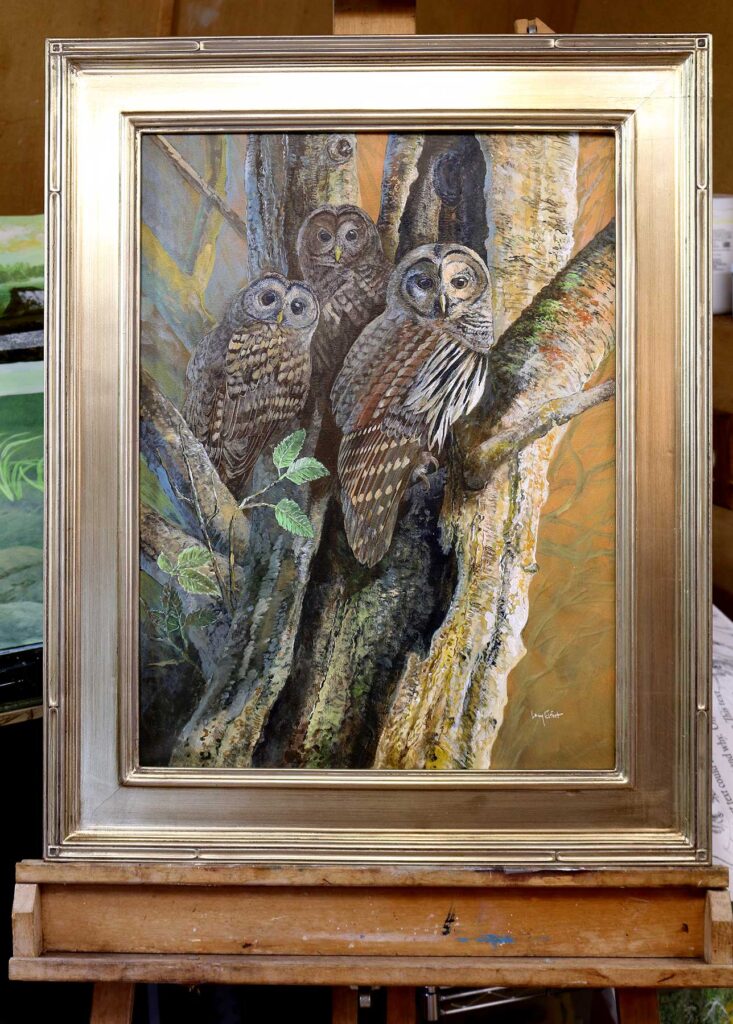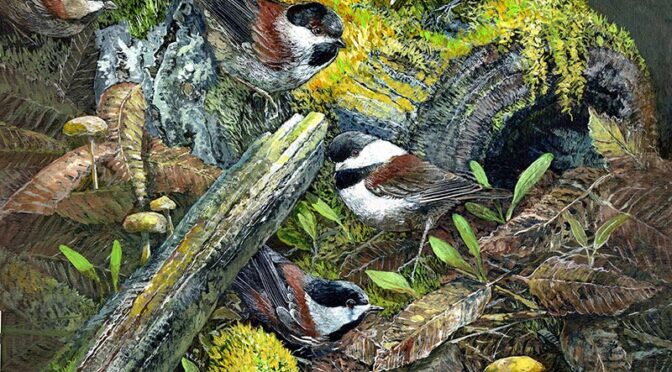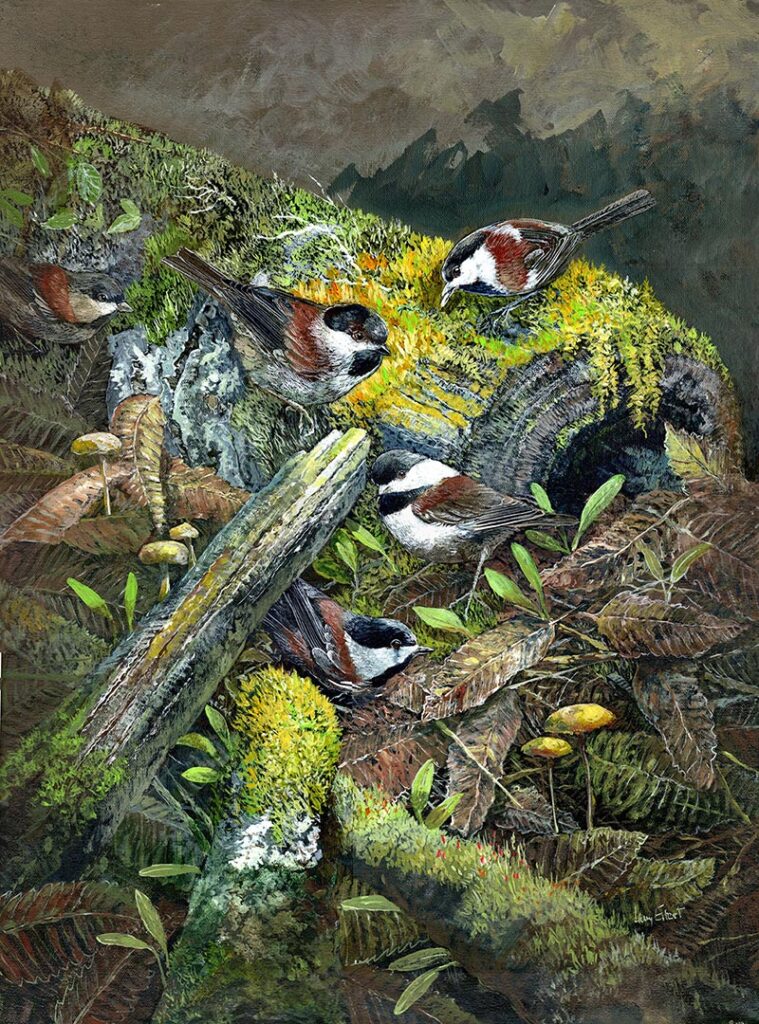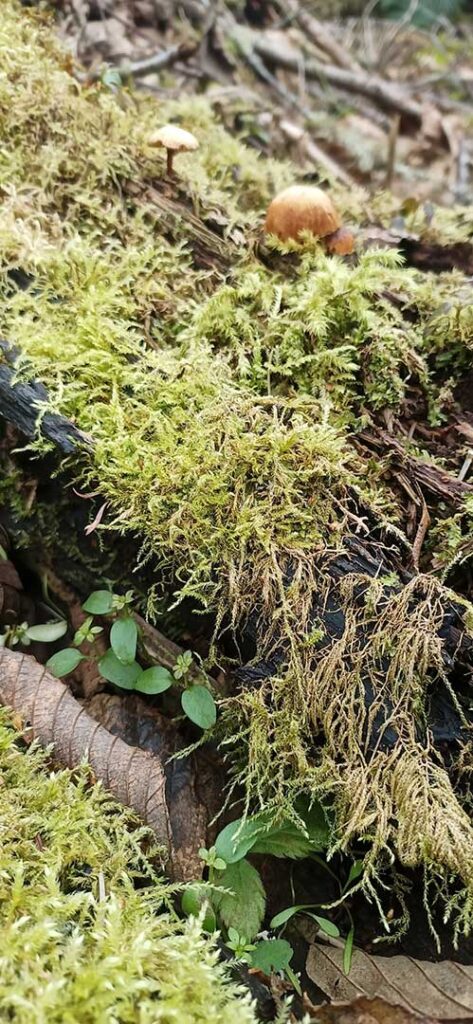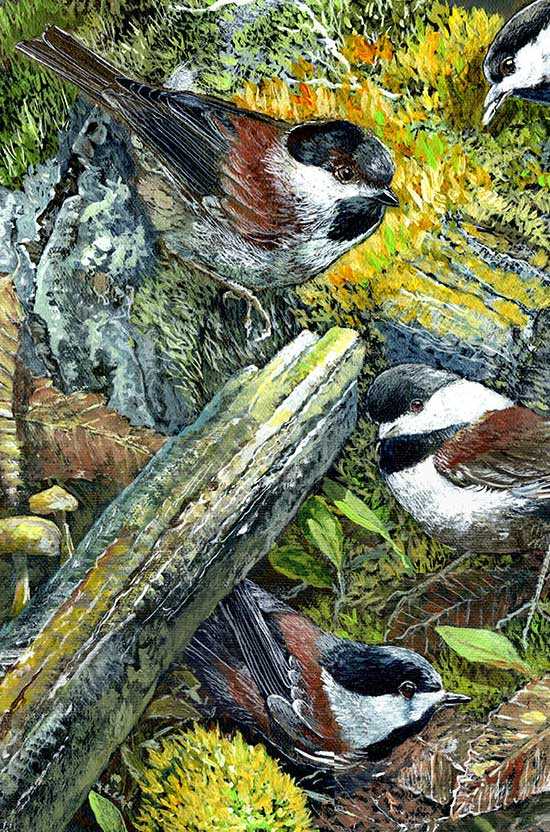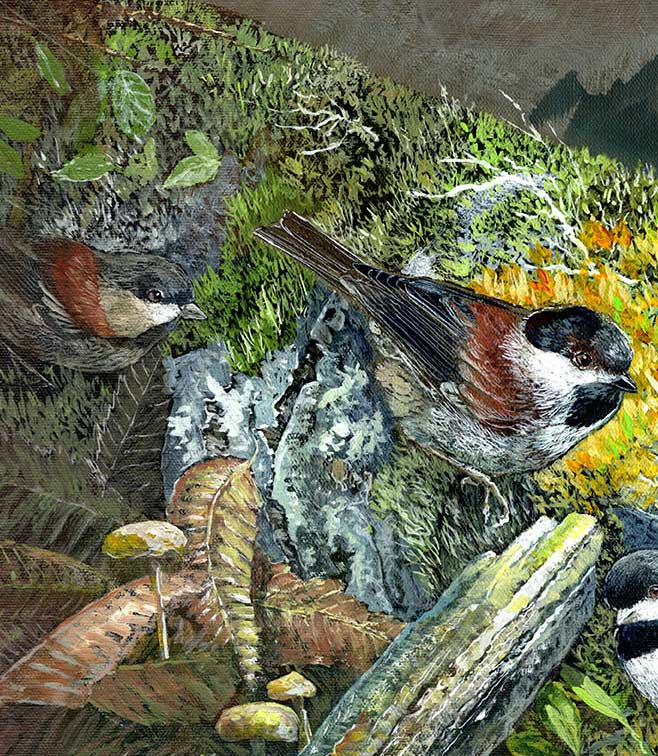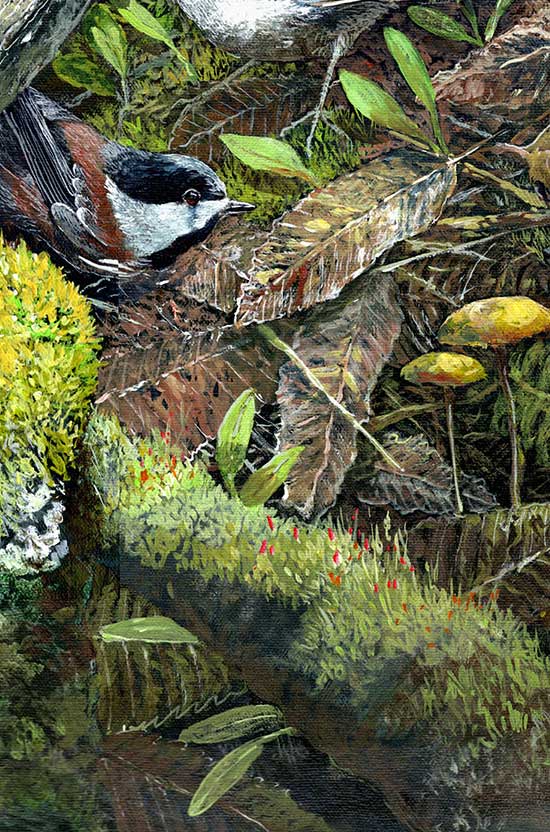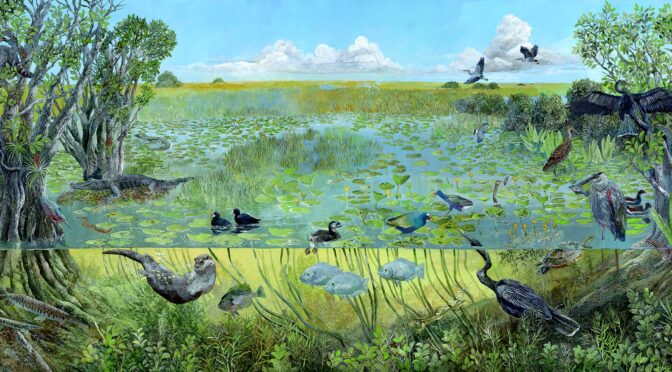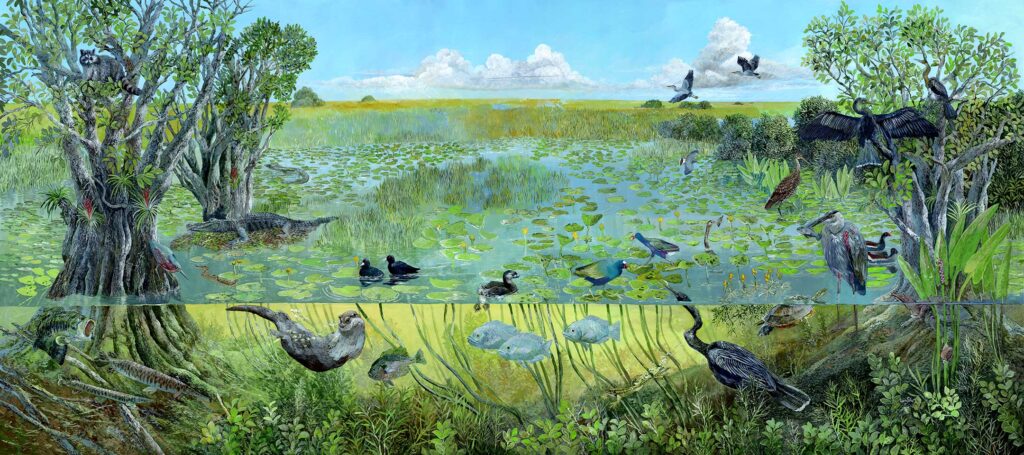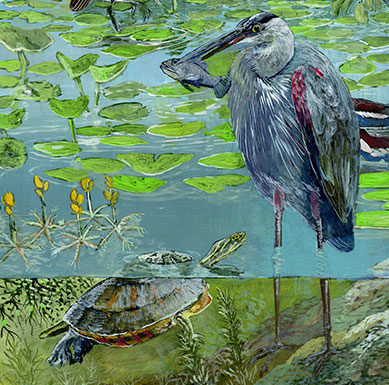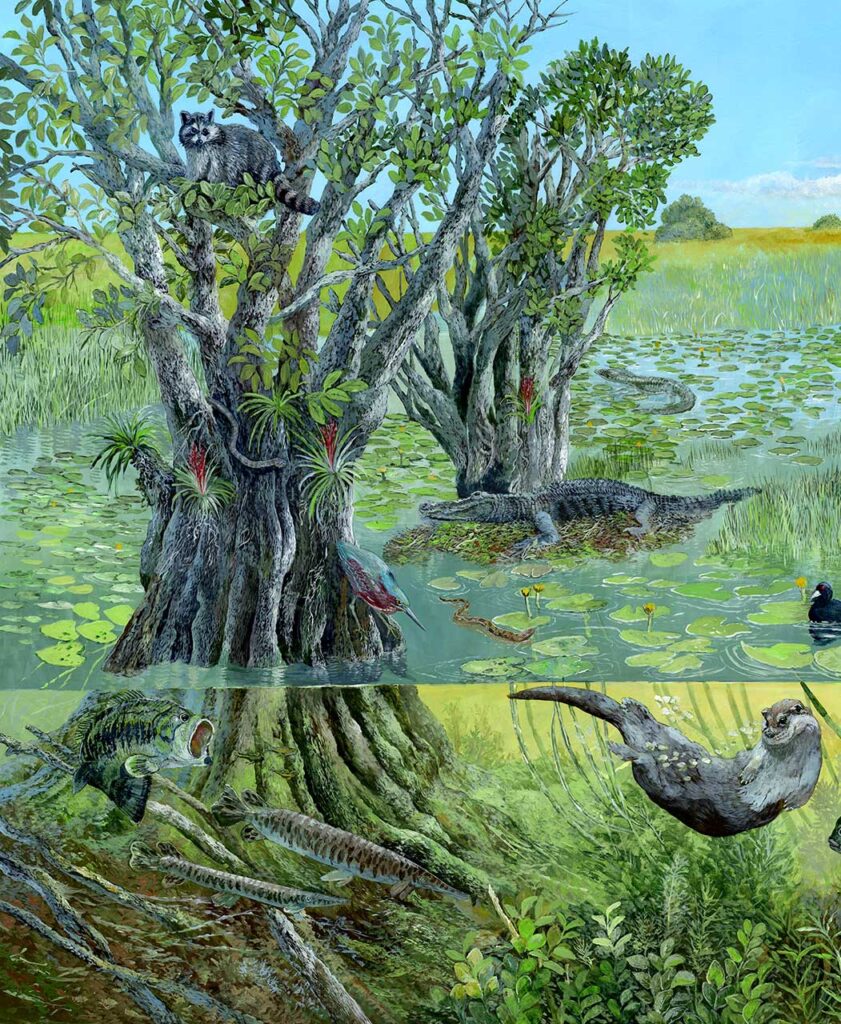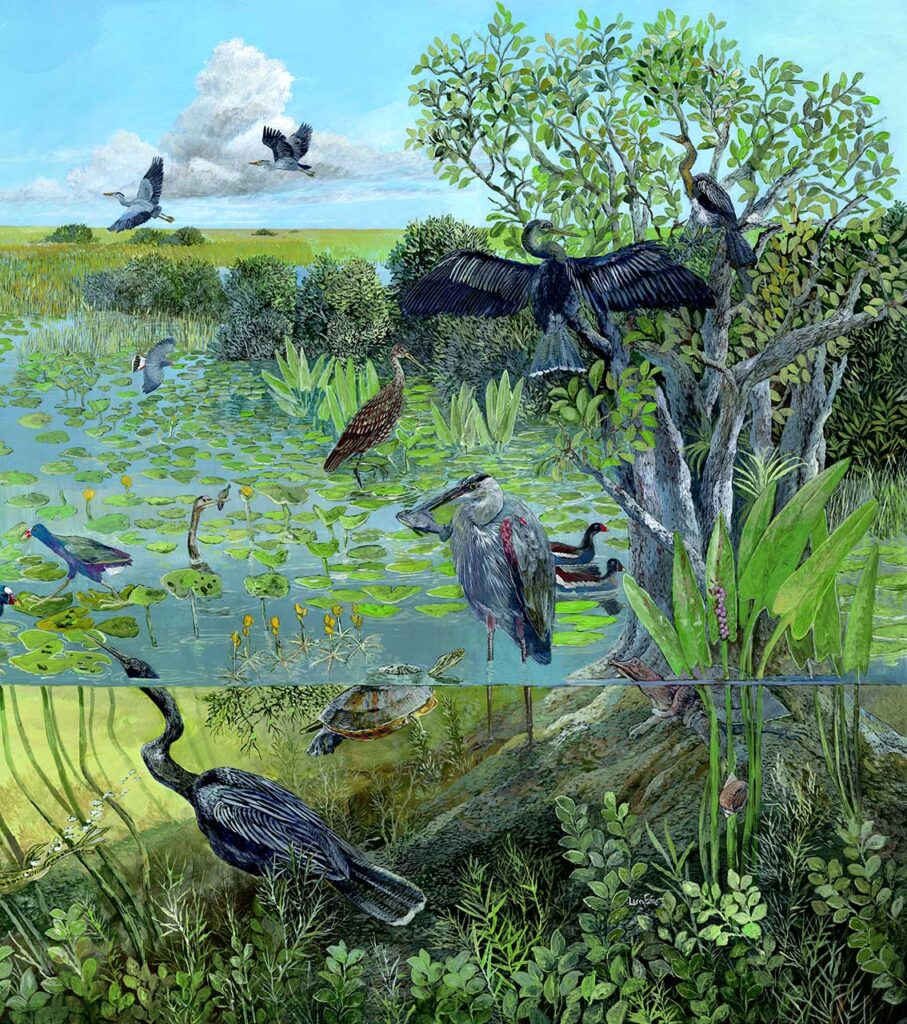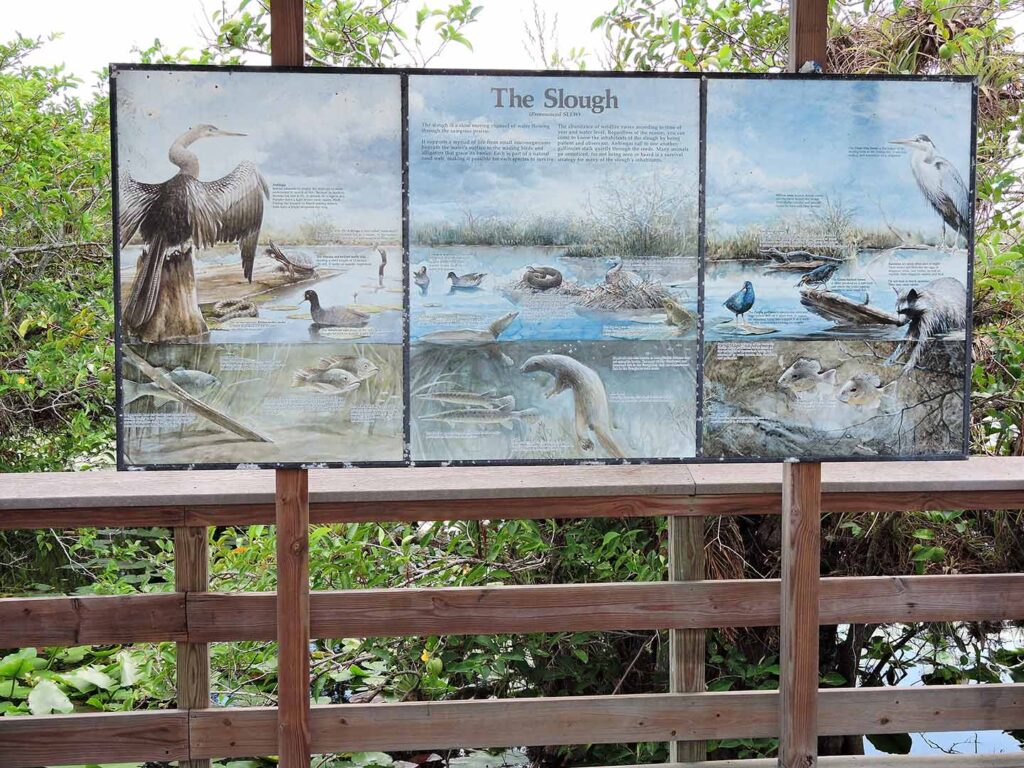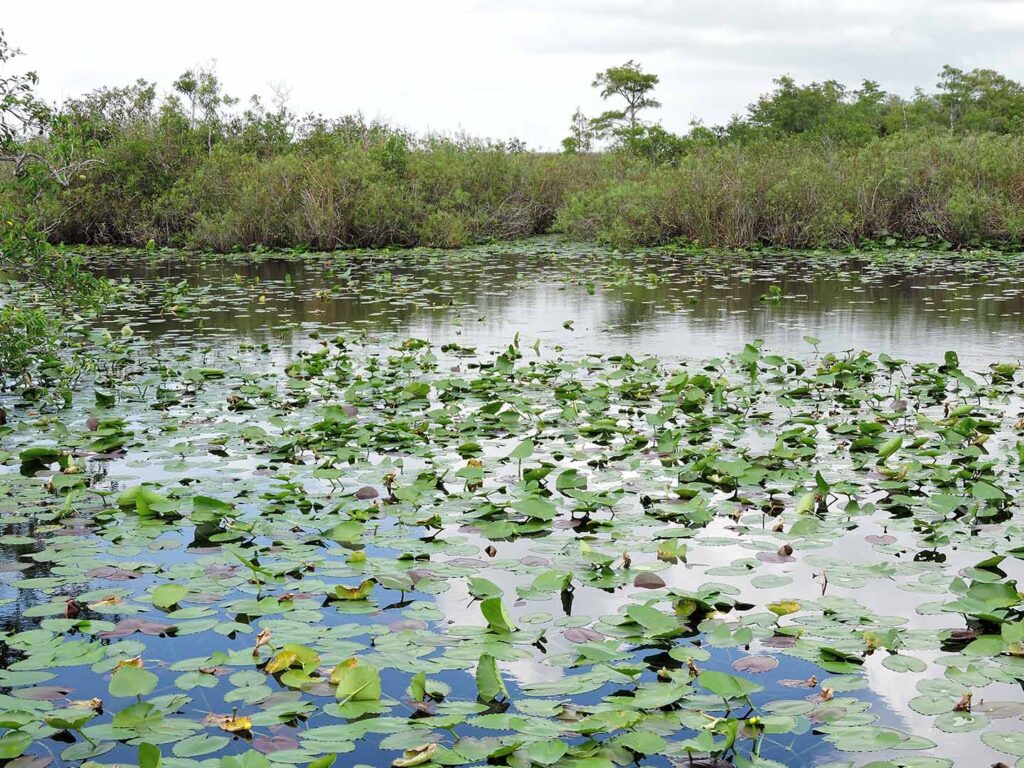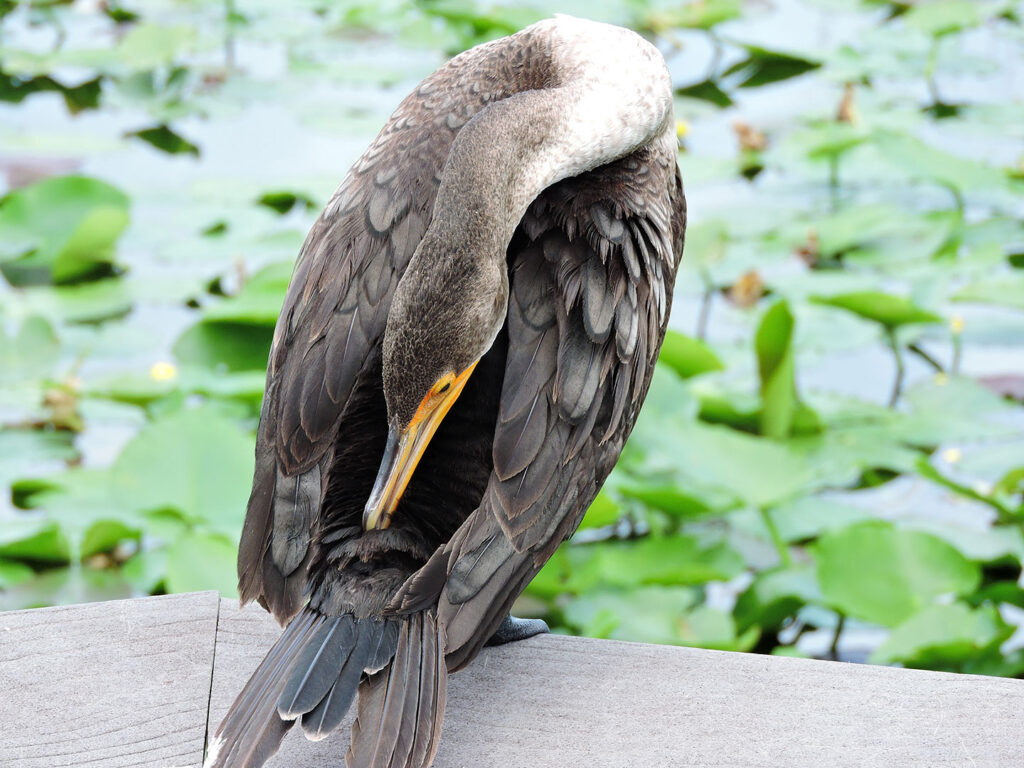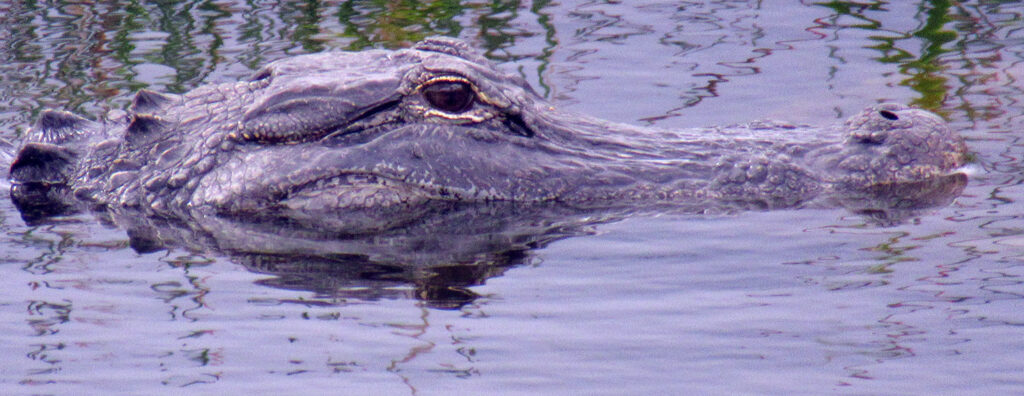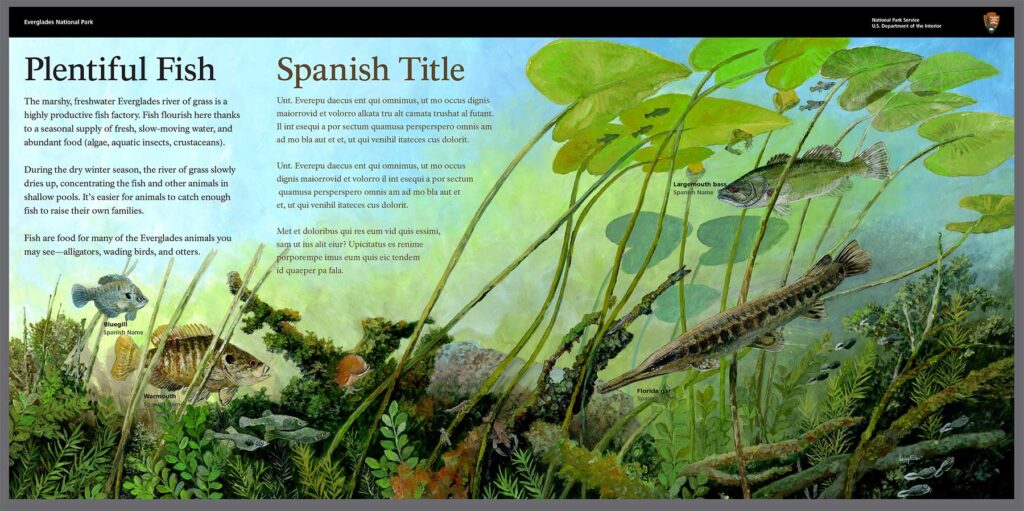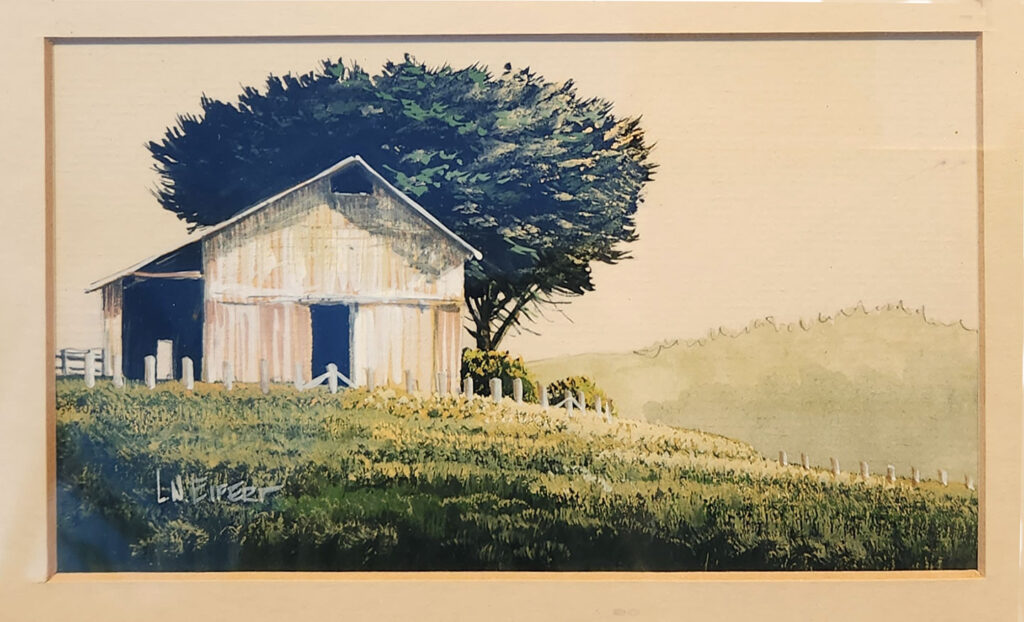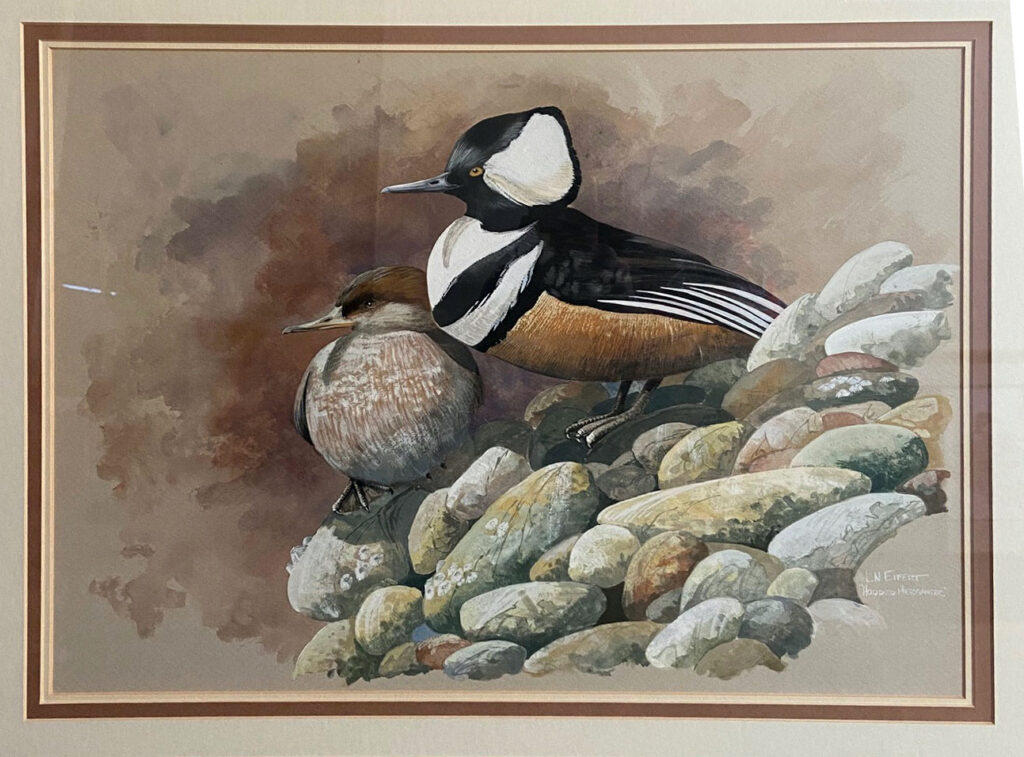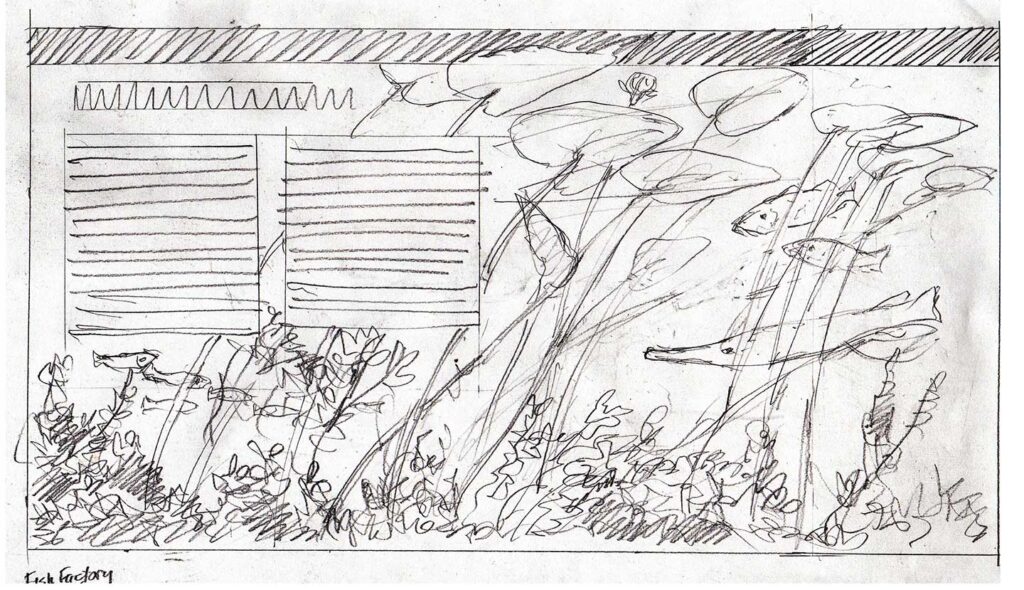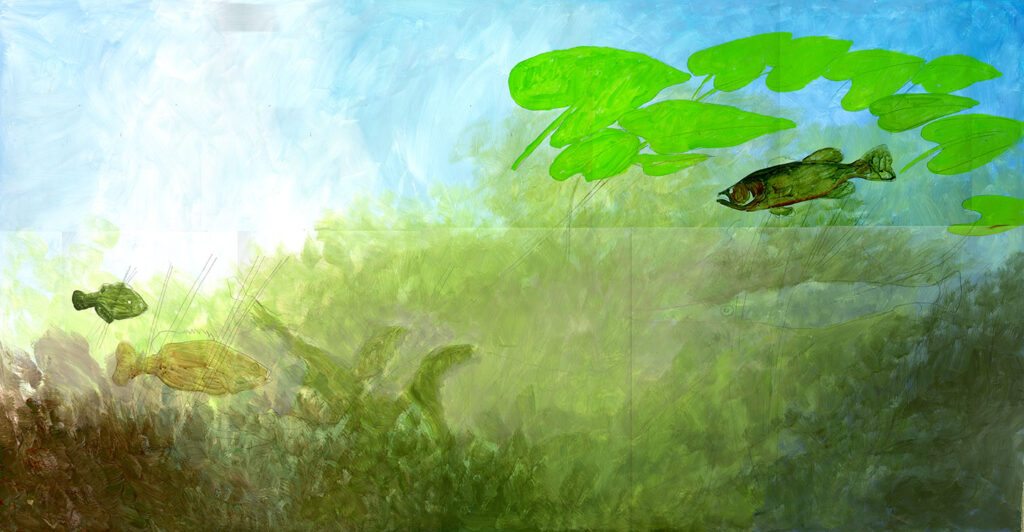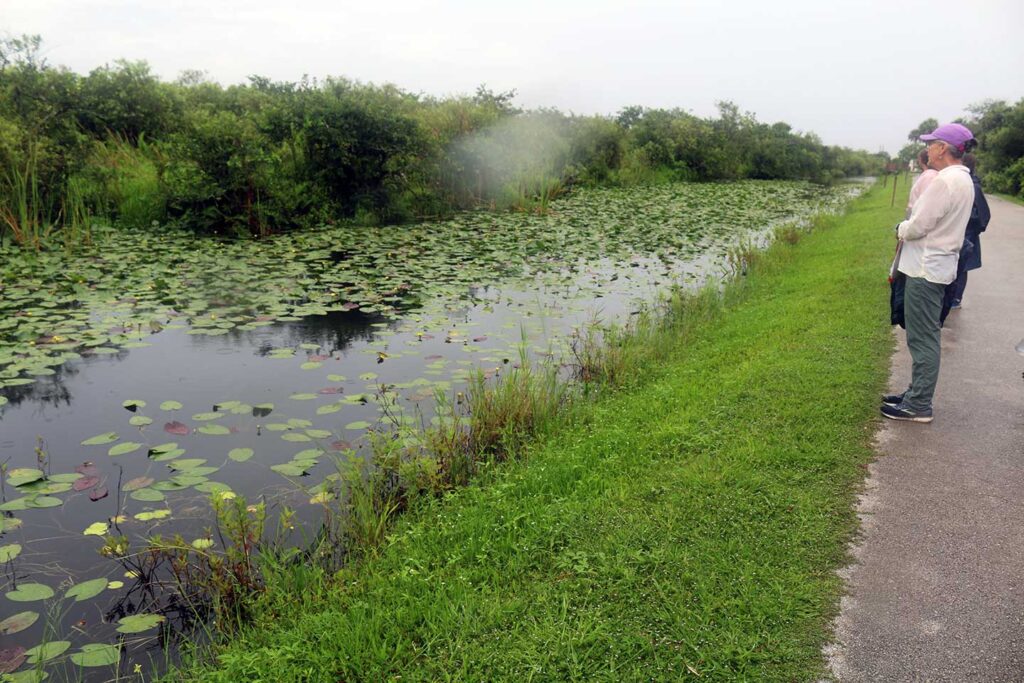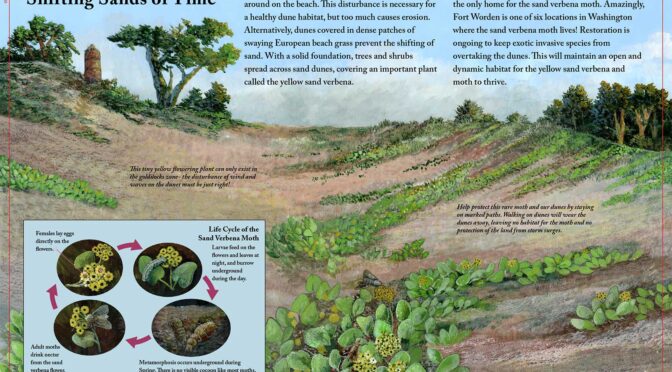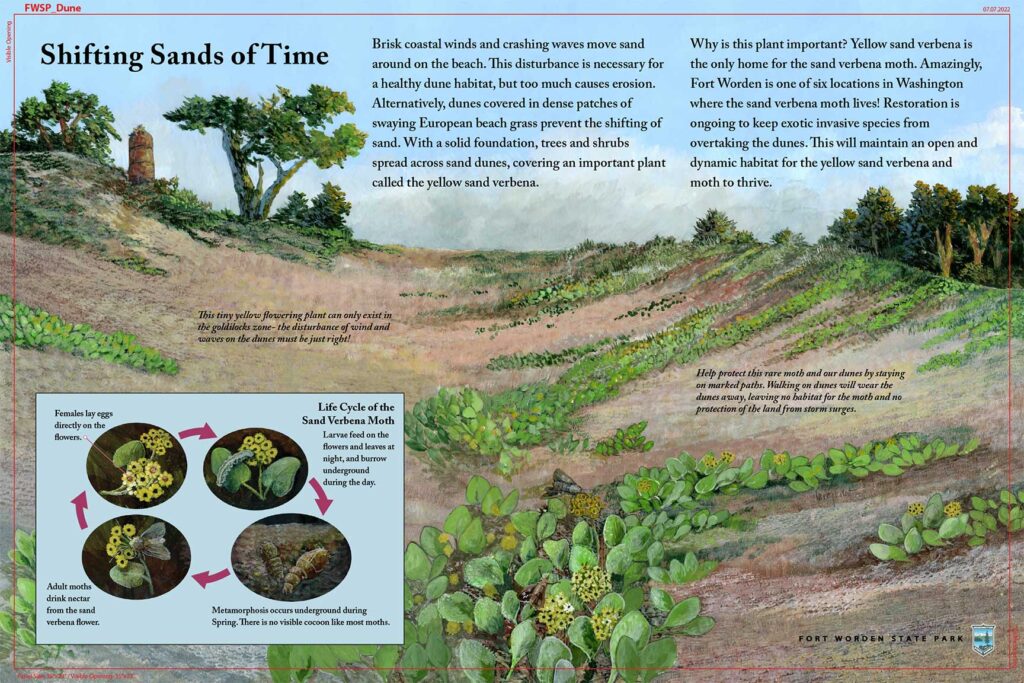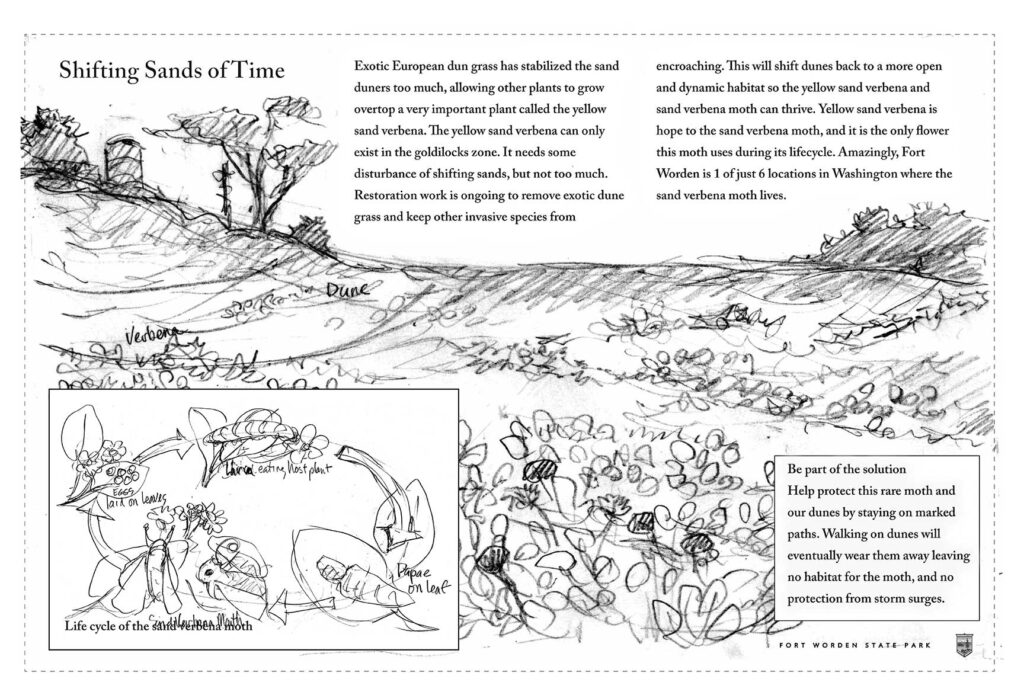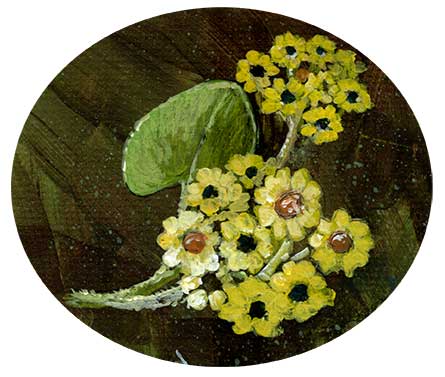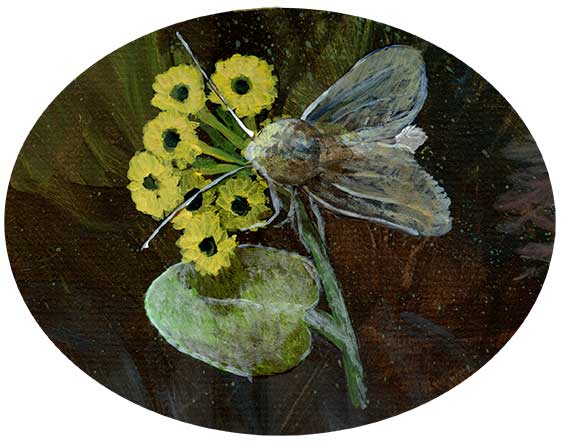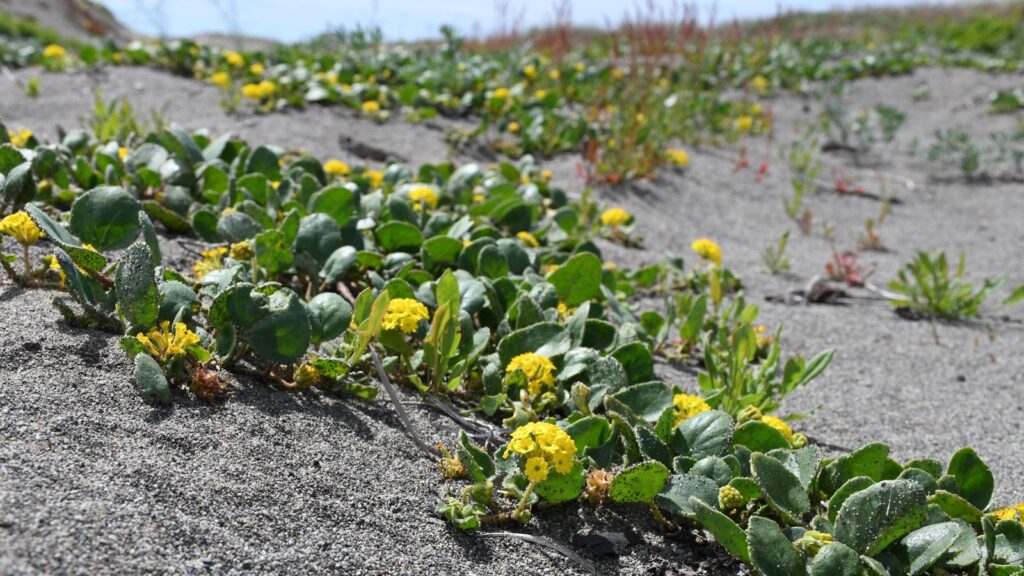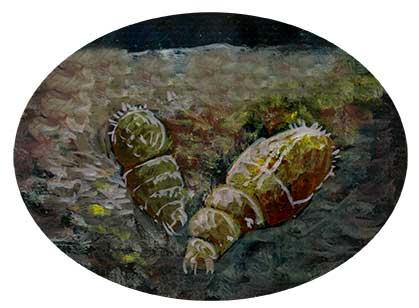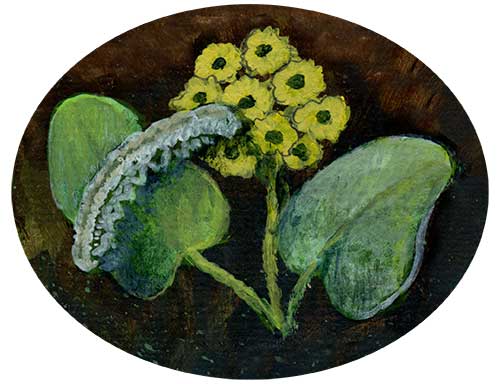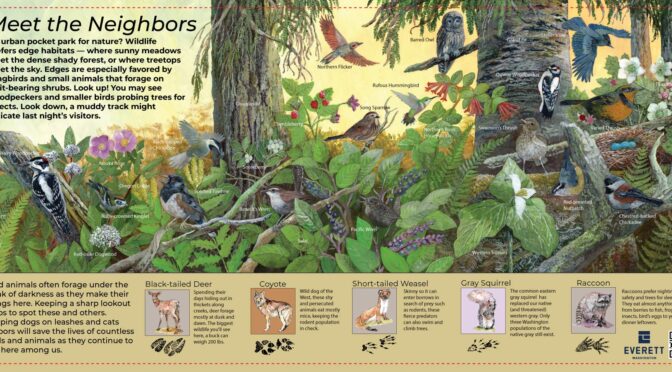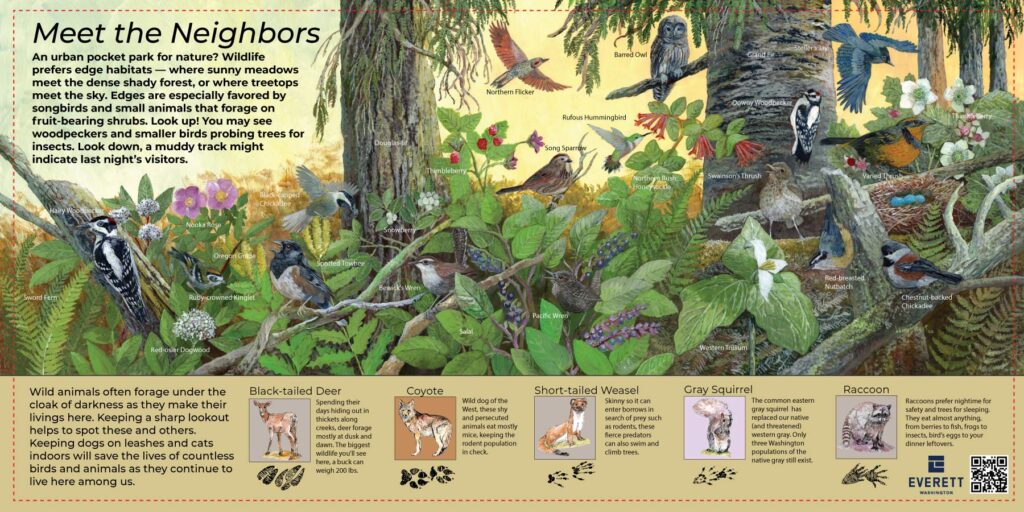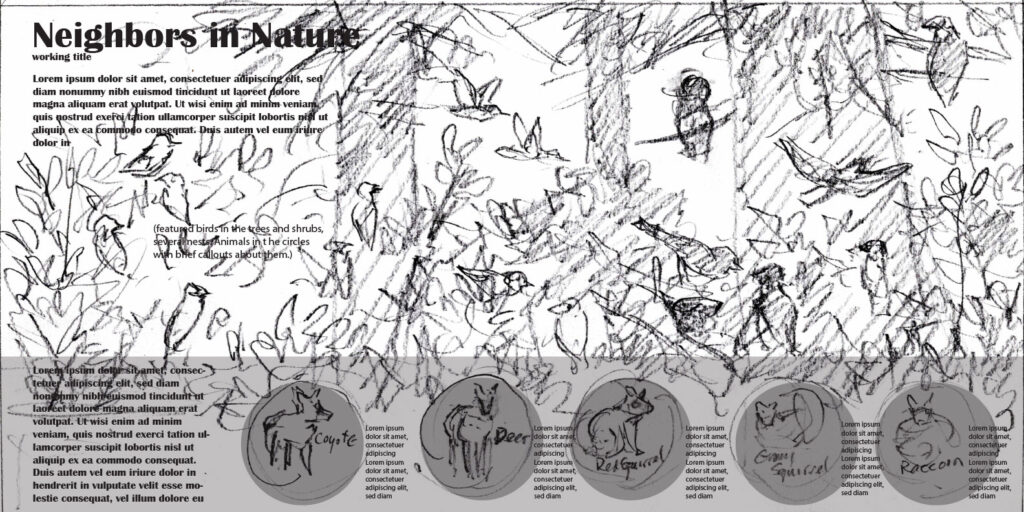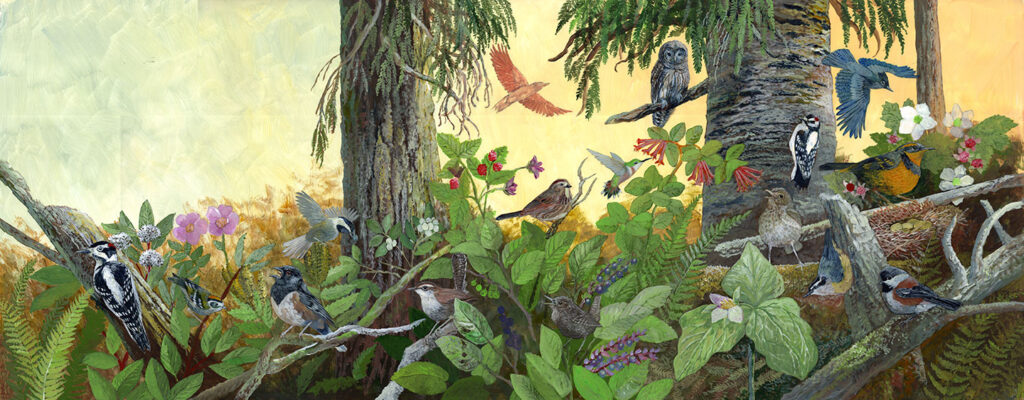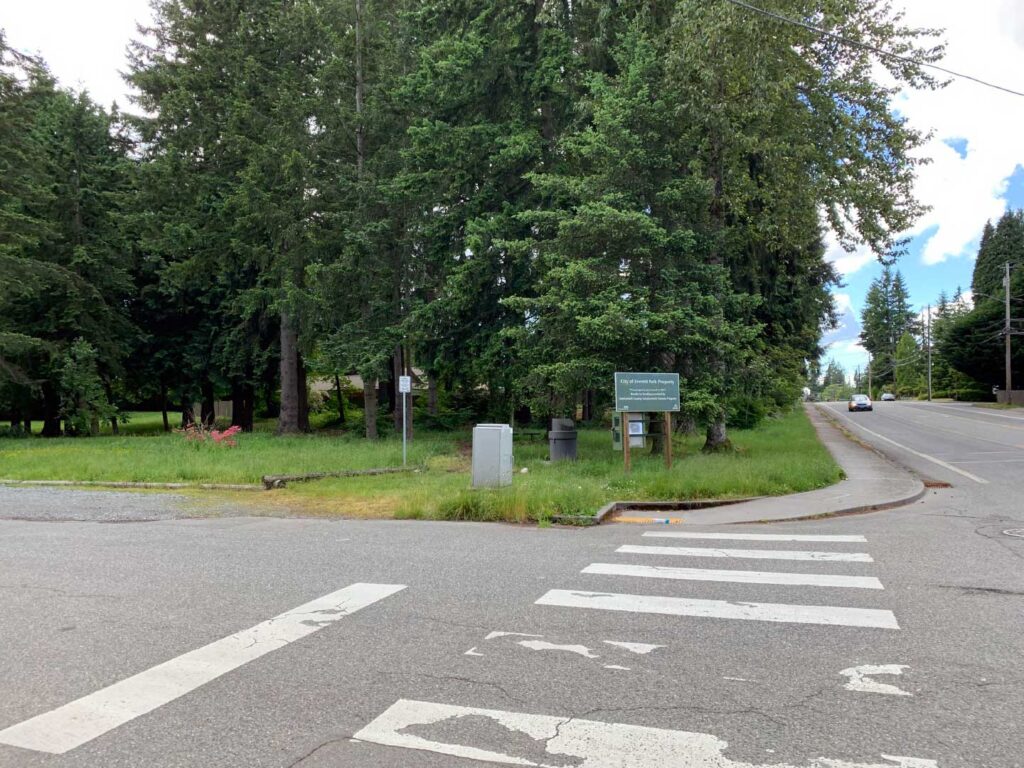2023-3-11 “The Neighborhood” is an acrylic painting on canvas, 30″ x 40″. It’s a little story about the communities of wildlife on the Olympic Peninsula where we live – paint. This has been on my easel for awhile, changing and evolving, sort of like the critters, themselves. We’ve seen over 90 different species here in our forest, but so far not a single elk.
No preliminary sketches were made for this painting – it was laid out as I went along, placing the elk’s nose right in the center-of-interest and everyone else radiated out from there. I set the stage for a place a bit more wet than here in dry-Port Townsend, a rainforest commonly seen just west of here.
Below are some closeup shots of the details.
I made a funny little video of my process with this painting – it’s up now on my YouTube Channel. I think it’s important to be able to laugh at yourself and this one brought tears. Damned easel. I didn’t do much editing to preserve the absurdity of it.
I go into this in my video on my channel here. There are others, too.
Or here: https://youtu.be/Dj3gCVx2U6A
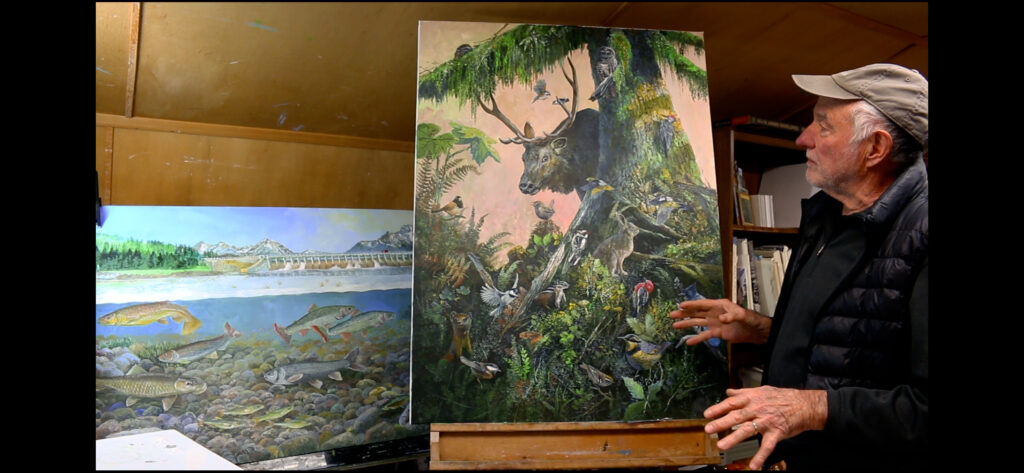
![]() This painting started out as a deer painting, then it quickly evolved into an elk and after remembering the giant bull elk (two of them) I almost ran into last summer not 2 miles from here. It grew into a full-blown ecosystem effort with many critters, all of which are here in our forest – except the spotted owl. That bird has been replaced by a similar character (barred owl) that might take my head off any minute.
This painting started out as a deer painting, then it quickly evolved into an elk and after remembering the giant bull elk (two of them) I almost ran into last summer not 2 miles from here. It grew into a full-blown ecosystem effort with many critters, all of which are here in our forest – except the spotted owl. That bird has been replaced by a similar character (barred owl) that might take my head off any minute.
Below: besides the elk, there’s a Pacific wren, two black-headed grosbeaks (they nest here in the forest), a downy woodpecker and snowshoe hare.
This painting is 30″ x 40″ acrylic on canvas and is available for sale. Email me at larry@larryeifert.com for information. Framed as you see it here, I’m asking $2300 framed, normal price for this size. No gallery fees.
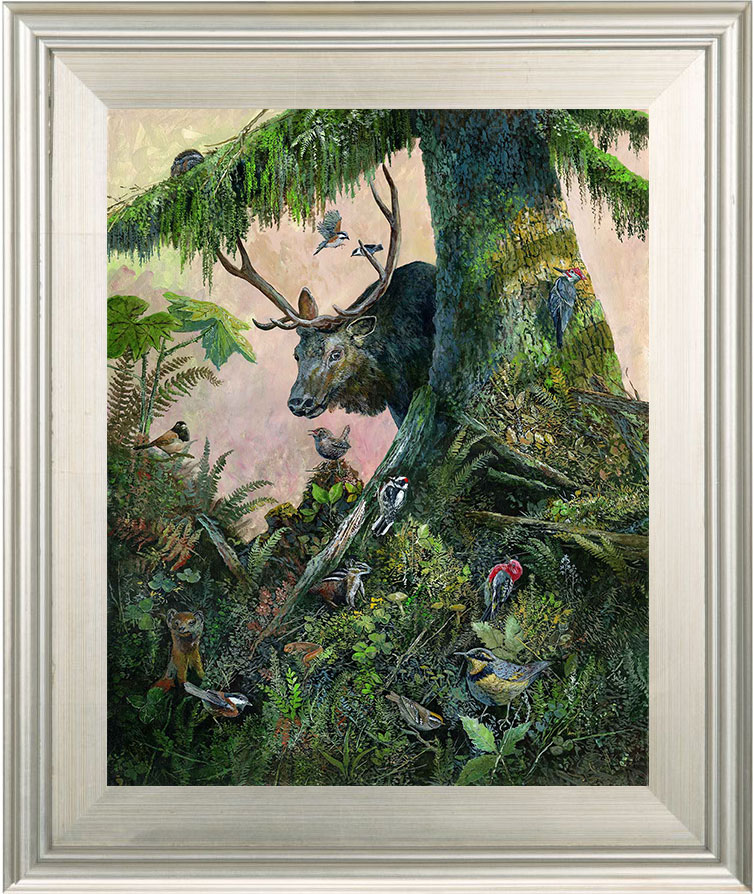 And we also have this darker frame. Shipping is extra, but we have the crate ready to go.
And we also have this darker frame. Shipping is extra, but we have the crate ready to go.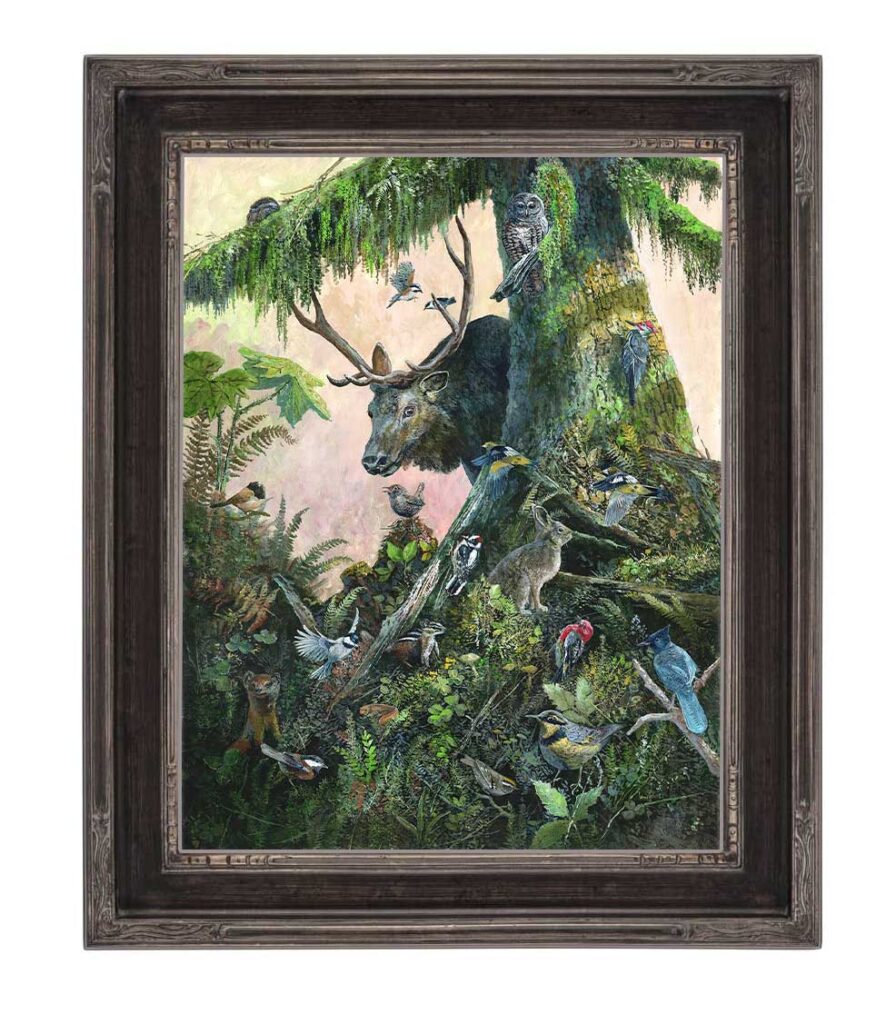
I also did some still photography of the studio recently for my videos. Here’s a fun shot of the interior where I spend many hours of my life. It should enlarge with a click.
Thanks for reading this week. You can sign up for emails for these posts on my website at larryeifert.com.
Larry Eifert
Here’s my Facebook fan page. I post lots of other stuff there.
Click here to go to our main website – with jigsaw puzzles, prints, interpretive portfolios and lots of other stuff.
Nancy’s web portfolio of stunning photography and paintings.
